iBasso D16 Taipan 1 Bit FPGA DAC AMP with 128 DACs – The Ultimate Listening Experience Of Cascaded 16 Sets of 8E PWM-DACs
iBasso D16 is a $1499 USD Digital to Analog Converter and Super Class A Headphone Amplifier, designed as a portable unit, with what I consider to be the most unique DAC tech we have seen this year. I am talking about 1Bit DACs, with 16 sets of cascaded 8E PWM-DACs, resulting in 128 PWM-DACs, for 1bit D/A conversion. This is literally the daddy of all portable DAC/AMPs available for purchase today, and given the price point and design we will compare iBasso D16 Taipan to other similarly priced units, including iBasso DX320 MAX Ti (3499 USD), Astell&Kern Acro CA1000T DAP (2299 USD), Dethonray Listening M1 (2599 USD), Astell&Kern A&Ultima SP2000T (2500 USD) and AudioAnalogue AAdac (4000 USD). As this is a high-end DAC/AMP model with unique driving qualities, we will also pair it with HIFIMAN HE1000SE (3500 USD), Soundz Avant (1390 USD), and iBasso SR3 (599 USD).

Introduction
iBasso decided to make something to overtake the market, the best DAC Headphone Amplifier, decoder, and amp that will have no other to take its place, for a portable. While D16 is a true high-end flagship that can beat the market, and iBasso creates state-of-the-art devices, they are also popular with the crowds that have a limited budget, as their DX160 series, DX170 series and affordable dongles are super popular, being able to provide extreme price / performance ratio for both affordable, but also flagships. As an Amazon Influencer, I earn from qualifying purchases, and using the purchase links in my reviews helps me maintain this website and Youtube Channel. A huge thanks to iBasso for providing us with the sample for this review.
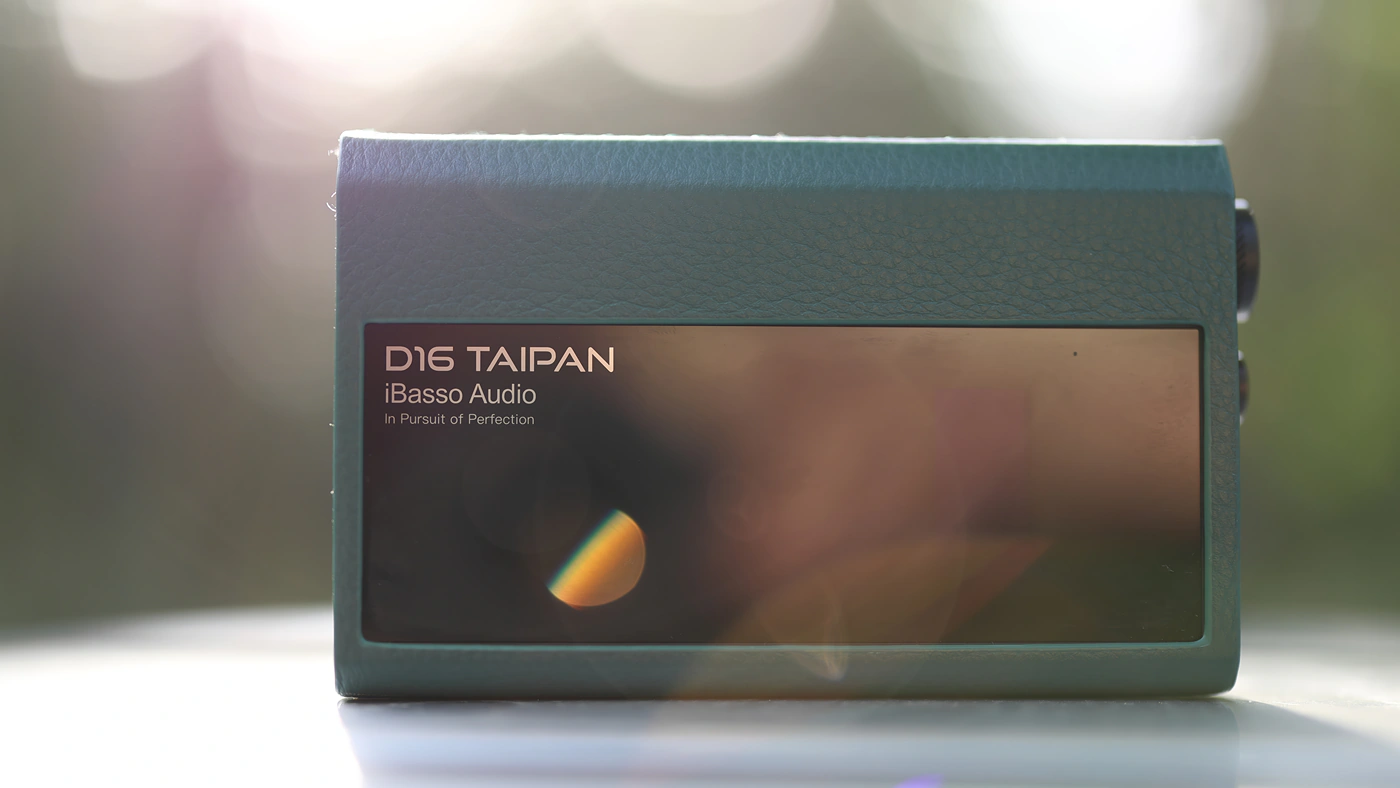
PROs – Excellent build quality, superb resolution and detail, super high dynamics and resolution, refined textures that have zero grain, it presents music with a wide and holographic soundstage, and has no background noise with most IEMS. The maximum driving power from the balanced headphone output is more than enough for most headphones out there, while there is a granular, fine control for IEMS if using the DAC volume. No loss in quality or channel balance at any volume, and long battery life, with no USB DAC delay make it literally perfect. Draws in strengths from both a traditional delta-sigma DAC listening experience, but also has the softer, more refined and more dynamic sound of an R2R, the unique implementation of iBasso offering what I consider to be the most interesting tuning for a DAC/AMP I heard to date.
Cons – Needs both Type-C inputs populated if you want to keep the battery at max, so charge is done on a separate input. A bit large and heavy for being truly portable.
Product Link
You can grab one here – https://amzn.to/4fvwP2Y
Build Quality/Aesthetics
Physically, iBasso D16 is a solid metallic DAC AMP with an OLED display, and multiple inputs, multiple outputs, and multiple volume wheels. D16 is not the heaviest DAC AMP, and at 316 grams, it is portable by my standards, and even when strapped to a smartphone, the stack is lighter than bigger DAPs, offering a place in the world for D16 to exist.

The battery life of D16 is rather long at 9 hours, and I was able to measure over 7 hours even when using the balanced headphone output, very loud volumes, and hi-res files. It basically will deliver a full day of listening with no problems. D16 has QC3.0 Quick Charge, and it takes around 2.5 hours to fully charge the DAC AMP. We also have high resolution support, with the Type-C USB Input offering PCM support up to 768kHz and DSD512 support, while the 3.5mm coaxial input also sports the same PCM support, but DoP256 for DSD. The same 3.5mm input at the back supports optical signals, and there is supports PCM signals up to PCM192kHz, and DoP up to DoP128.
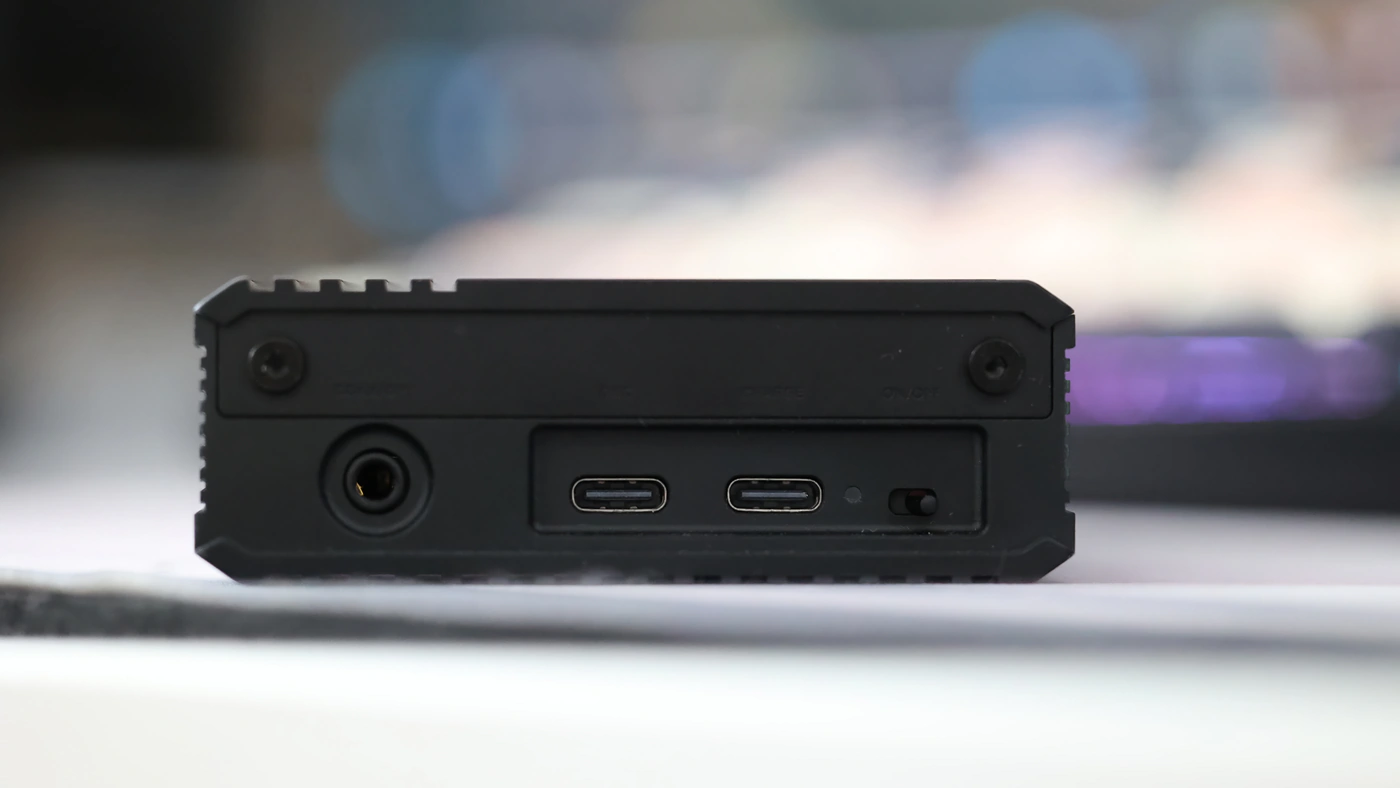
Speaking of the inputs, at the back of the unit we have that 3.5mm input which is both a coaxial and Optical input, but we also have the two Type-C USB inputs. There is a separate Type-C input for DATA and another one for charging. As D16 has a battery inside, there is no need to always populate the Type-C Charging port, unless you run out of battery.
For the headphone outputs, we have a 4.4mm Balanced headphone output which can also act as a 4.4mm Line out, a situation in which it has a different specification. As I left both the headphone AMP on high gain and the DAC gain on high gain, I will be quoting those numbers, but using lower gain will not affect the sonic quality, but it will offer even more volume control. The most important aspects are that at the high gain for the AMP and High gain for the DAC, we have up to 6.8 Vrms and a power of up to 1125mW + 1125mW, for an impedance of 32 OHMs. This comes with a dynamic range of 123 dB, SNR of 123 dB, and a Crosstalk separation of 131 dB. The frequency response is quoted for 15 Hz – 40 kHz, and the THD is rated at -117 dB at 1 kHz, for a 600 OHM load.
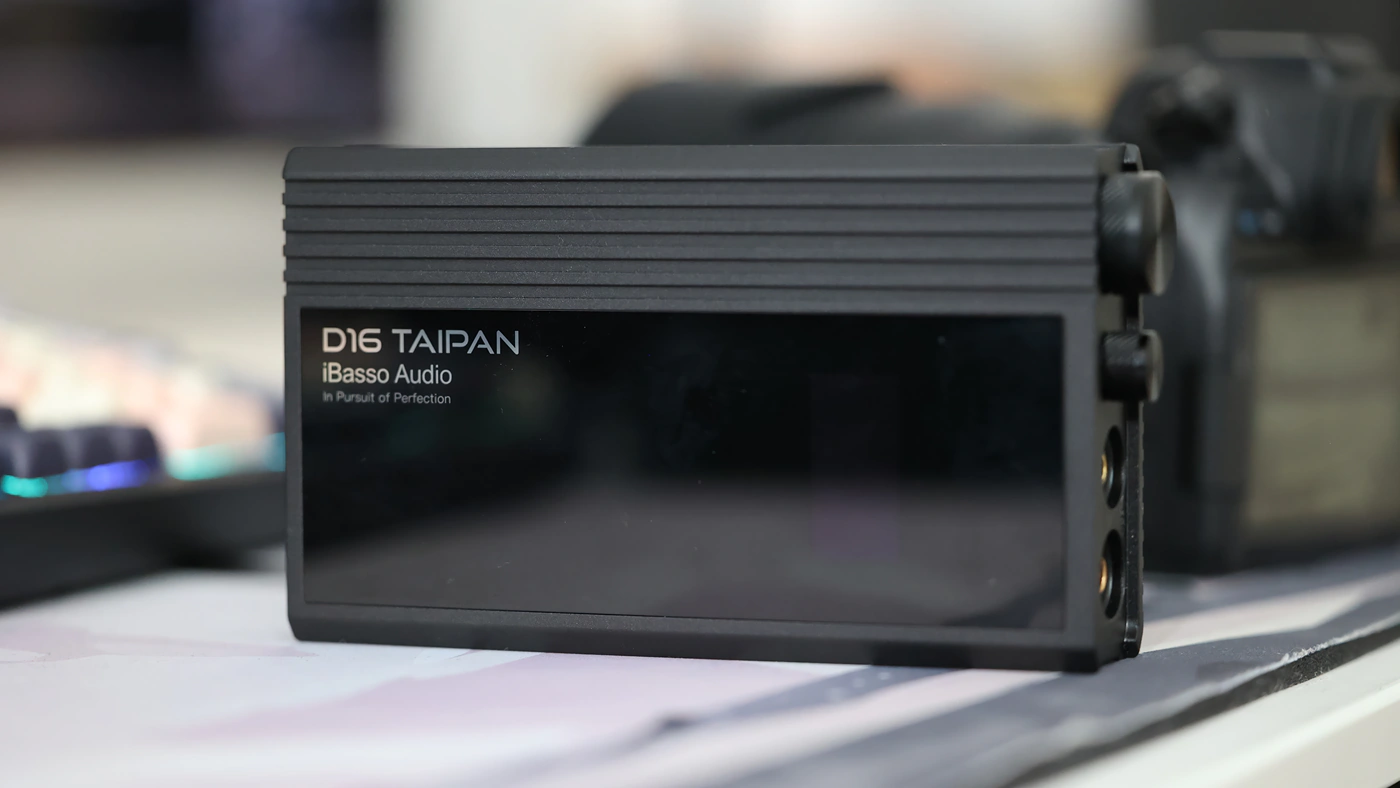
For the 3.5mm single ended headphone output, we have up to 3.4 Vrms for the H gain, and an output power of up to 640 mW + 640 mW for an impedance of 16 OHMs, so the SE output has less than half the power of the balanced headphone output. Even during my tests I noticed that while I can comfortably drive all the headphones I have around the house using the 4.4mm balanced headphone output, the 3.5mm single ended headphone output is better for IEMs, and doesn’t have the same driving power as the Balanced one. The 3.5mm PO is impressive nonetheless,. And we have a crosstalk separation of 130dB, a Dynamic Range of 118 dB, and a SNR of 118 dB. The THD + N or noise is rated at -114 dB , 1kHz for a 600 OHM load.
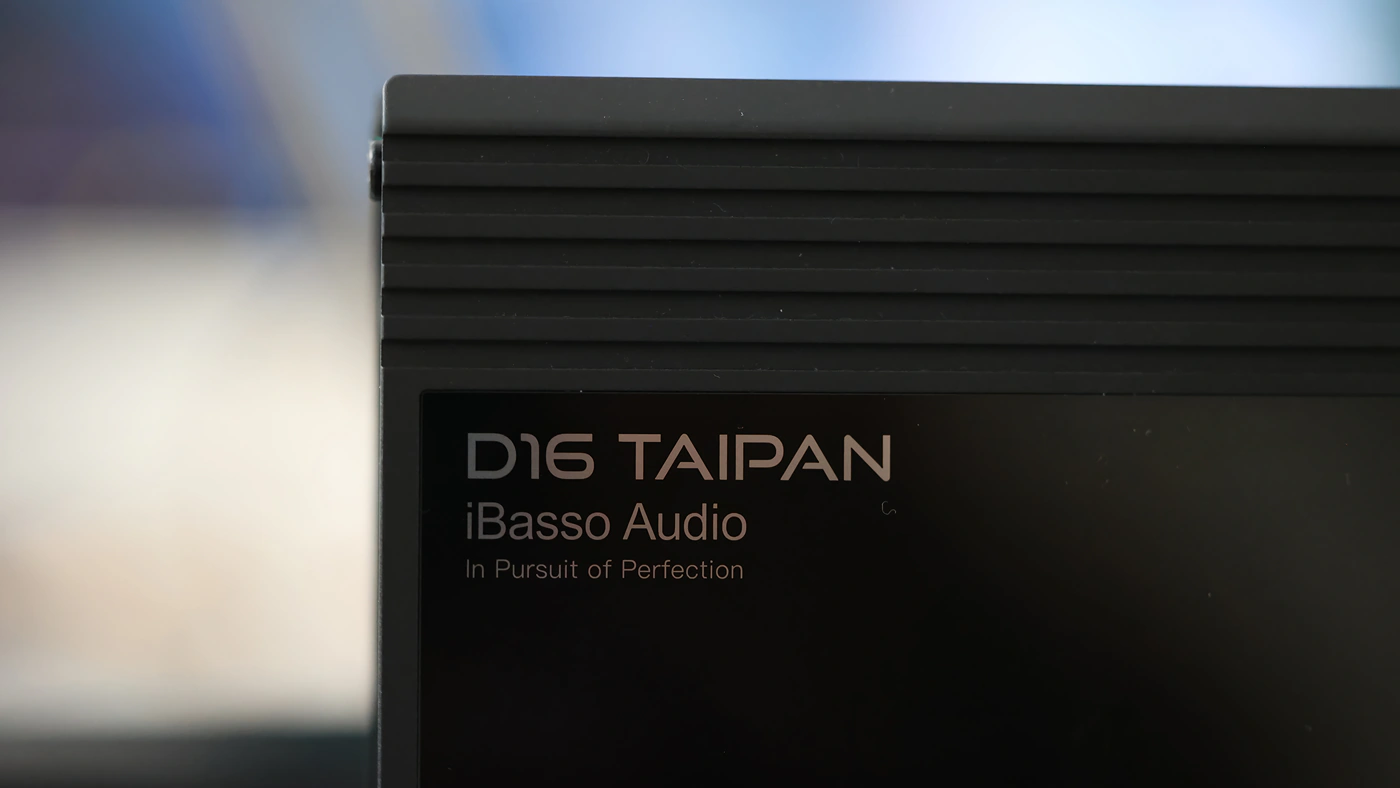
If you will be using iBasso D16 as a DAC with Line out for each output, the level decreases to 4Vrms for the balanced output, and 2Vrms for the single ended output, while the distortion is even lower for both, crosstalk separation even better, and dynamic range + SNR are the same, as those are determined by the DAC and no the Headphone AMP which engages when driving headphones. The power supply has a noise floor as low as 0.6uV, and we have seen complex and well implemented batteries from iBasso in the past with their DAPs, so a lot of the talk will be about the DAC this time around, as it is rather marvelous.
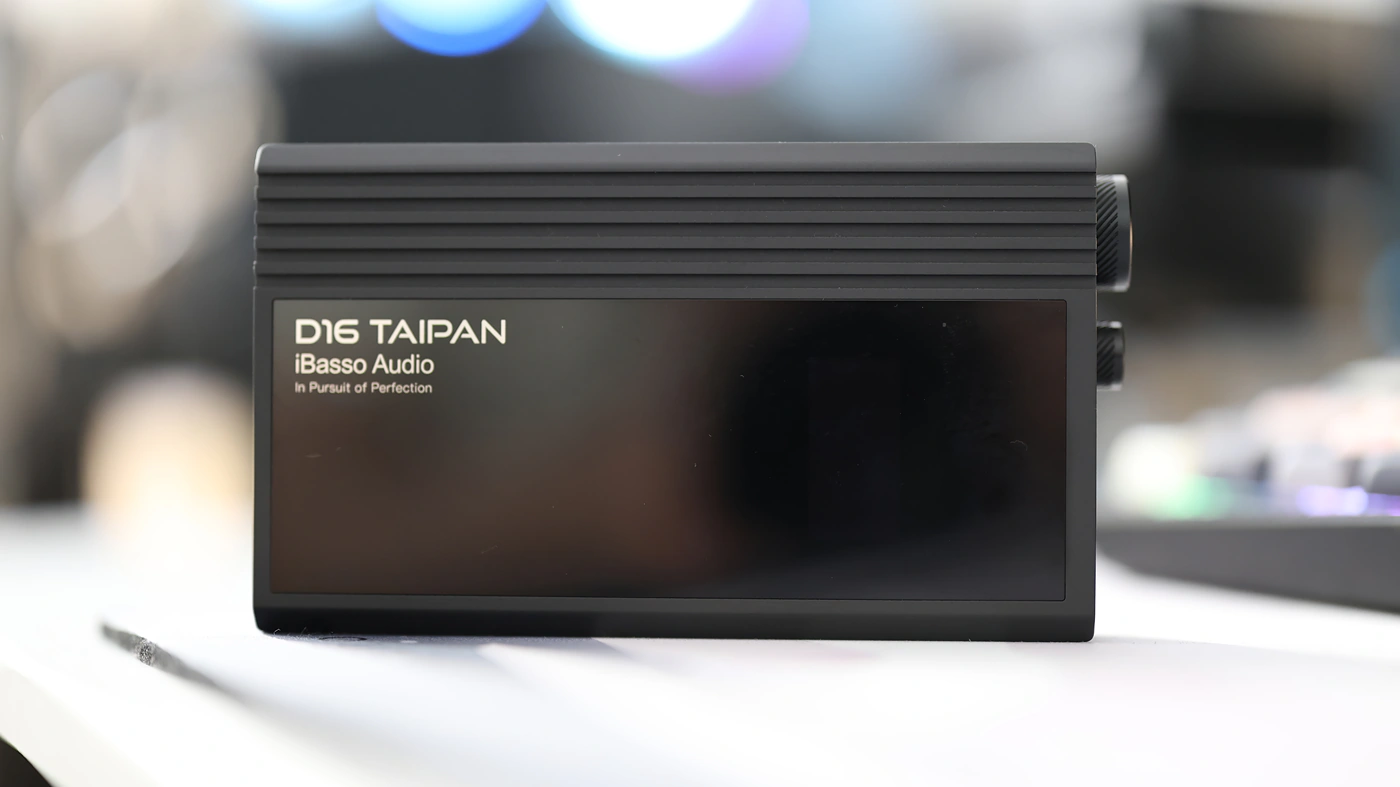
As iBasso D16 has 16 sets of 8E PWM DACs, it exceeded by more than 6.4 times most other solutions that use an FPGA based implementation, and D16 reaches a THD+N level of less than 0.0001%. There are a few graphs explaining how the DAC tech works, but it is basically a complex mathematical sonic signal reconstruction that yields much higher precision than delta-sigma, which looks a bit like a closest neighbor math formula. The 128 independent PWM-DACs operate in FIR mode, which means that each channel has 32 PWM DACs operating in delay parallel mode, allowing the 32 DACs to act together as an analog FIR Filter. The headphone amplification is provided by a super Class A discrete AMP circuit, which incorporates 20 Low VCesat BISS Dial Transistors, having a current capability of up to 2A, boosting up to 1125mW + 1125mW for an impedance of 32 OHMs. For volume control D16 uses a stepped attenuator, which has a perfect volume for each one of the steps, similar to the way ECDesigns PowerDAC-SX achieves a perfect volume control, no channel imbalance or volume problems, the only drawback being that there are only 24 steps of volume. The DSP chip allows a theoretical performance of 192dB dynamic range, and a THD of -174dB.
Digital To Analog Converter And USB DAC Functions
We can jump right into the heart of the D16, as it is a DAC that uses iBasso’s in-house developed FPGA-Master 2.0 as the core, and has 16 sets of 8E PWM-DACs, with a total of 128 PWM-DACs, for 1bit Digital to analog converters. This results in a much lower THD and noise than most DACs have, and from what I can understand, the design is closer to an R2R DAC than a standard Delta-Sigma DAC, but saying this would kill the innovation that iBasso brings to the table with how they implemented the 128 PWM DACs. To be fair, the technology is more similar to what Chord did with their Mojo and Hugo series, but the strength of D16 and implementation is far better, plus the battery implementation is also far better for D16, along with how well iBasso implemented the super Class A headphone amplifier part, so even then, comparing the tech would be unfair to the performance of D16. For the AMP, we have the super class A transistor amplifier, which is very similar to what we find in DX320 MAX Ti. This is one of the big reasons why D16 is not something I recommend pairing with DX320 MAX Ti, but instead with other DAPs like DX260, where you’d get a huge improvement in both the DAC and the AMP.
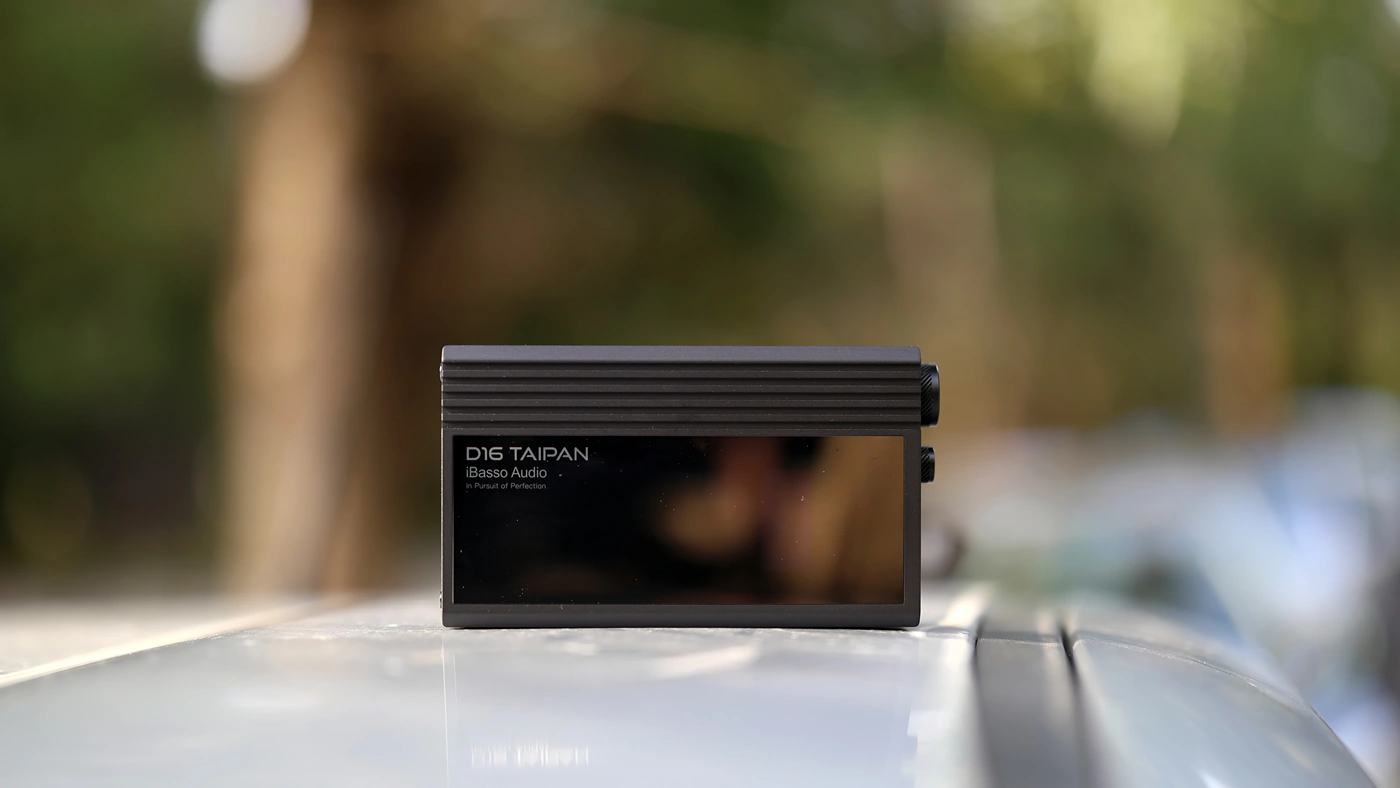
Although at first iBasso was known for their excellent implementation of standard DACs and superb customer satisfaction, they specialized in technology development for the past three years, and the FPGA-Master 2.0 we are seeing in D16 is the culmination of their research so far, bringing the new way the DAC is designed. The FPGA array will reorganize and recode the signal, to generate PWM signals that are further decoded by the PWM-DACs. A big reason why D16 might have the extreme dynamics we will hear in the Sound part of the review is this design that lowers the THD, which in Delta Sigma is capped by the DAC, and D16 has a noise shaper which radically lowers the noise floor.
D16 also sports Global Clock regeneration technology, with two Accusilicon femtosecond oscillators to provide a clock reference for the FPGA. This allows it to regenerate the synchronous low-phase noise clock required by the USB receiver. As 1Bit DACs are really sensitive to clock jitter, the phase noise of the Accusilicon audio oscillators are -158dBc/Hz, much lower than the traditional numbers for most femtosecond oscillators, recording the noise by 13 dB, and offering a far improved jitter control for D16.
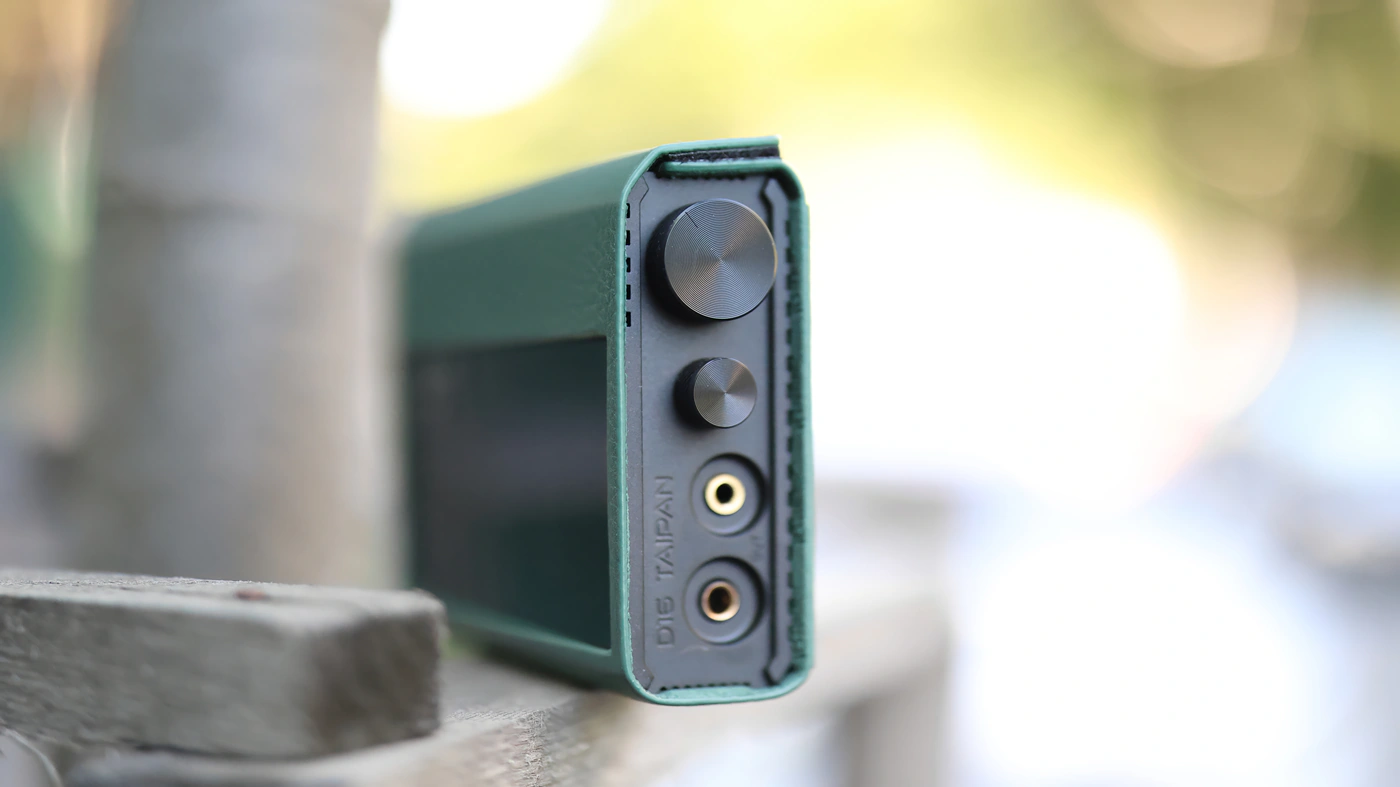
As I noticed no USB DAC delay, it is interesting to learn the FPGA implementation helps with this, as D16 has picosecond level precise control, which sets the I/O delay and compensates for the wiring delay of the board, allowing the signals to arrive at the DAC perfectly aligned and strictly synchronized. The DACs operate in FIR mode, with L+ L-, R+ R-, outputs, and the DAC data undergoes delay and alignment by compensation to be kept perfect. With great ability comes great responsibility, and I honestly see many multimedia enthusiasts nowadays purchasing top of the line and high-end DAC/AMPs, so it will be no shock when I say that they need real time reproduction, for watching movies, playing games, or basically any other Pc-Related activity. To be honest, I see D16 more useful for someone with a high-end Pc than a smartphone, given the size.
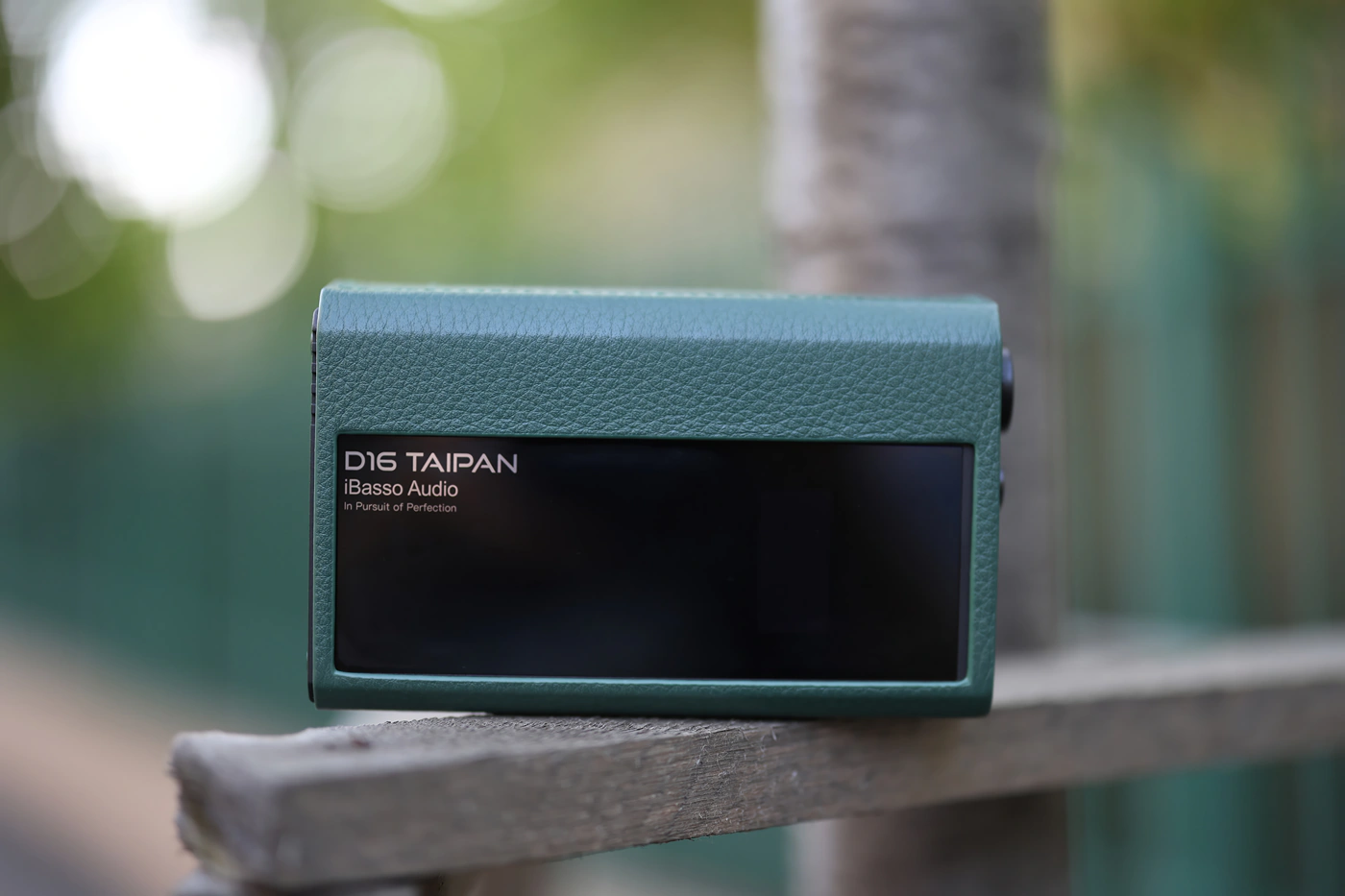
Not to draw this out too much, the USB DAC function is perfect, there is no DAC delay, you press play and sound starts playing, it never seems to go to sleep, and the unit will stay warm if you don’t turn it off, the reaction time is perfect and delay is zero, with less than a frame of content, so you will not hear any ms of delay between the DAC and the image. Even extremely fast content, games and audio editing / video editing happens in real time, with no errors or incompatibilities happening with Adobe or other software.
Sound Quality
Pairings – To properly test the D16 I have paired it with a wide selection of IEMS and Headphones, and it handles each one of them perfectly, with no audible distortion, perfectly adequate for punch and impact, but let’s see what this list has in store for D16 and how are we going to torture it. For IEMs, I have paired D16 with 7Hz Aurora, Campfire Bonneville, Campfire Cascara, ZiiGaat Cincotres, Letshuoer S15, Sivga Nightingale, and Sennheiser IE900. For the headphone list, I have used HIFIMAN HE1000SE, DCA Dan Clark Audio Expanse, Crosszone CZ-8a Enhanced, Erzetich Thalia, iBasso SR-3, and even Audeze LCD-5. iBasso D16 has zero background noise with IEMs, it is dead silent, with absolutely no hissing, no buzzing, it can actually be used at the minimum volume with nothing but music playing through. For headphones, the control and driving power is perfect for all headphones, including the rather hard to drive HE1000SE and LCD-5, and hopefully when Susvara will reach us, we will test D16 with it as well. I found that D16 works excellent with everything you throw at it, and it has fine volume control, both in the stepped volume wheel, but also in the DAC volume wheel digital controller.
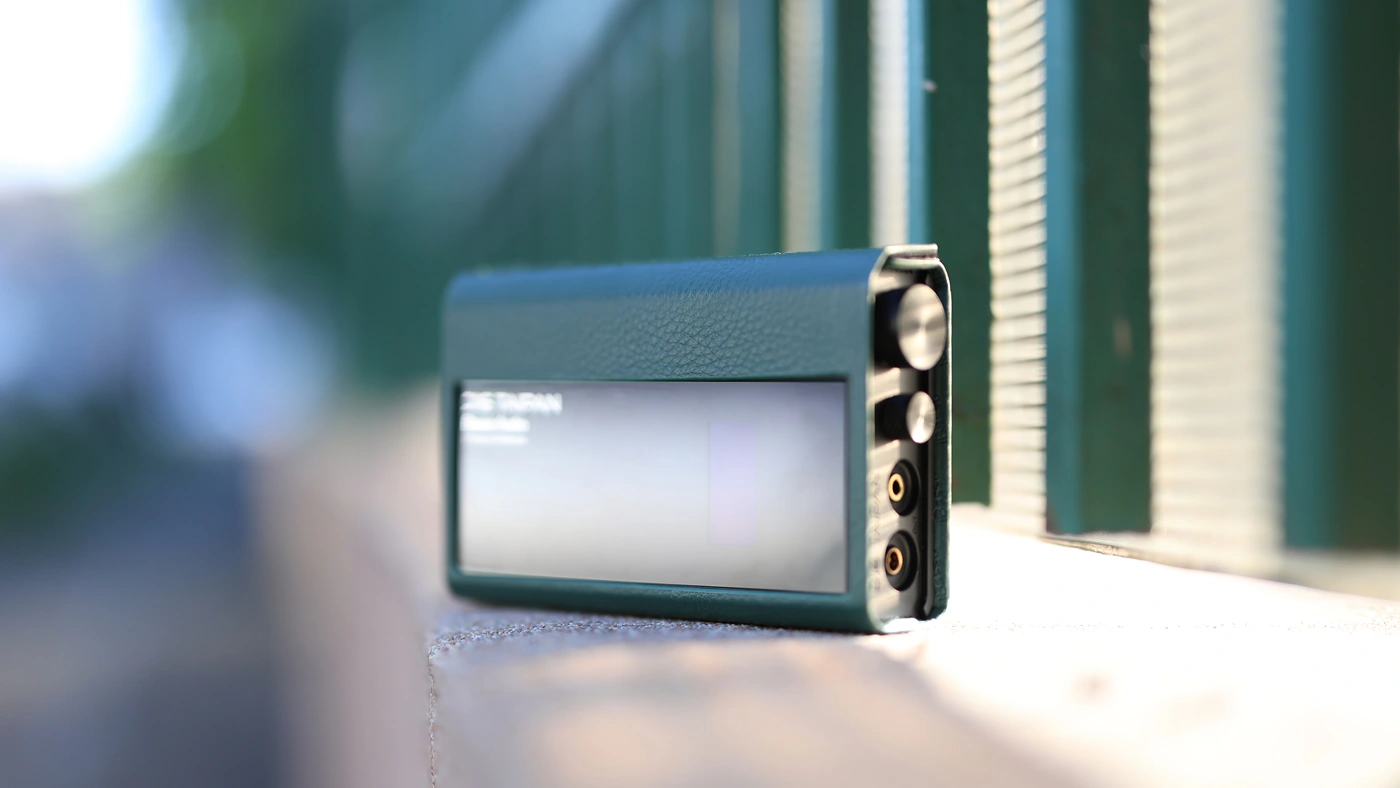
Overall Signature – iBasso always implements interesting signatures, but D16 is hands-down the best sounding DAC/AMP they made so far, and this year likely the best I heard, with a really dynamic, detailed and rich sound, revealing details that I didn’t know existed in my tracks, but keeping music lively, voices personal and emotional, while the soundstage is so wide that while writing this passage I turned my head three times while listening to some good old fashioned HimeHina as their songs have a lot of effects and I thought something was happening in my room. At this point, you’d say that I know the songs I am using for reviews quite well, but D16 paints each track in a whole another frame, it reveals textures and details that most other sources can’t, opens the treble, and projects this music in a boundless space, outside of my head and my room. D16 is truly impressive for its tonality, the way it actually paints details and instruments instead of harshness is by having extreme levels of resolution, it can show what each effect is, places it in its own space, and keeps everything surgically separated, instruments never cross each other and never combine.
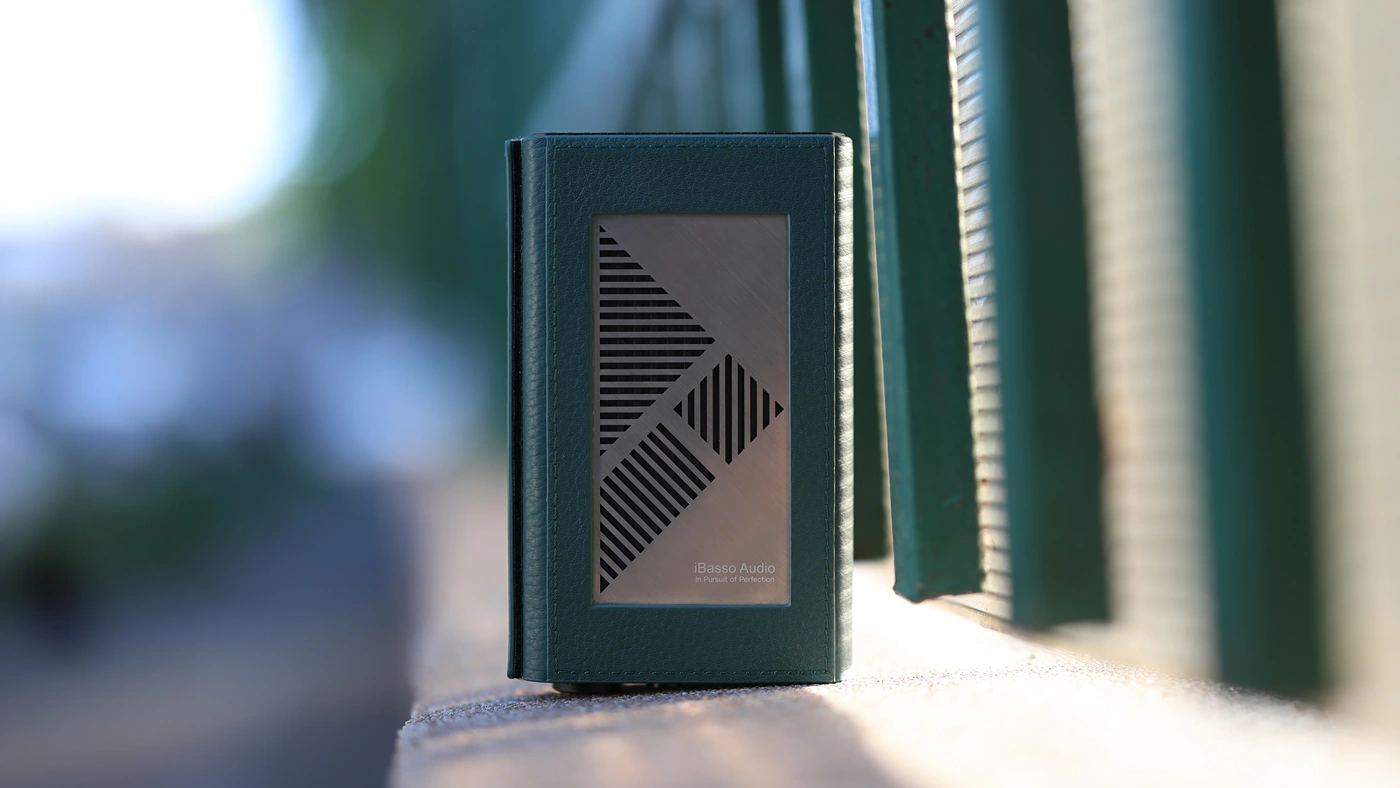
Bass – The tuning starts at the low-end, where D16 has one of the most detailed bass presentations I heard, it gives the right texture, grunge and vibration to each instrument, the bass is the fastest I know, keeping up with literally every music style, from rock to EMD to Pop and classical. You can expect to hear actual wood resonance down to the lowest note from wooden instruments, and all the way to bass guitars in songs from bands like Om and their album Advaitic Songs, where the bass guitar is always the most forward, boldest instrument. There’s a sense of presence to the bass guitar that is unmatched, but it is not the presence that’s unique, but the texture, you feel each finger sliding on each string, D16 has that magical resolution that brings out smaller reverberations in bass, creating a fully transparent listening experience. The overall presence and quantity of the bass is neutral, it doesn’t go even one bit above what I call true transparency and neutrality, but the extreme depths and extension will actually put the rumble and deep-end impact into most IEMs and Headphones and like a dark star, shine on the truth of how amazing most equipment sounds when driven from a fully capable source.
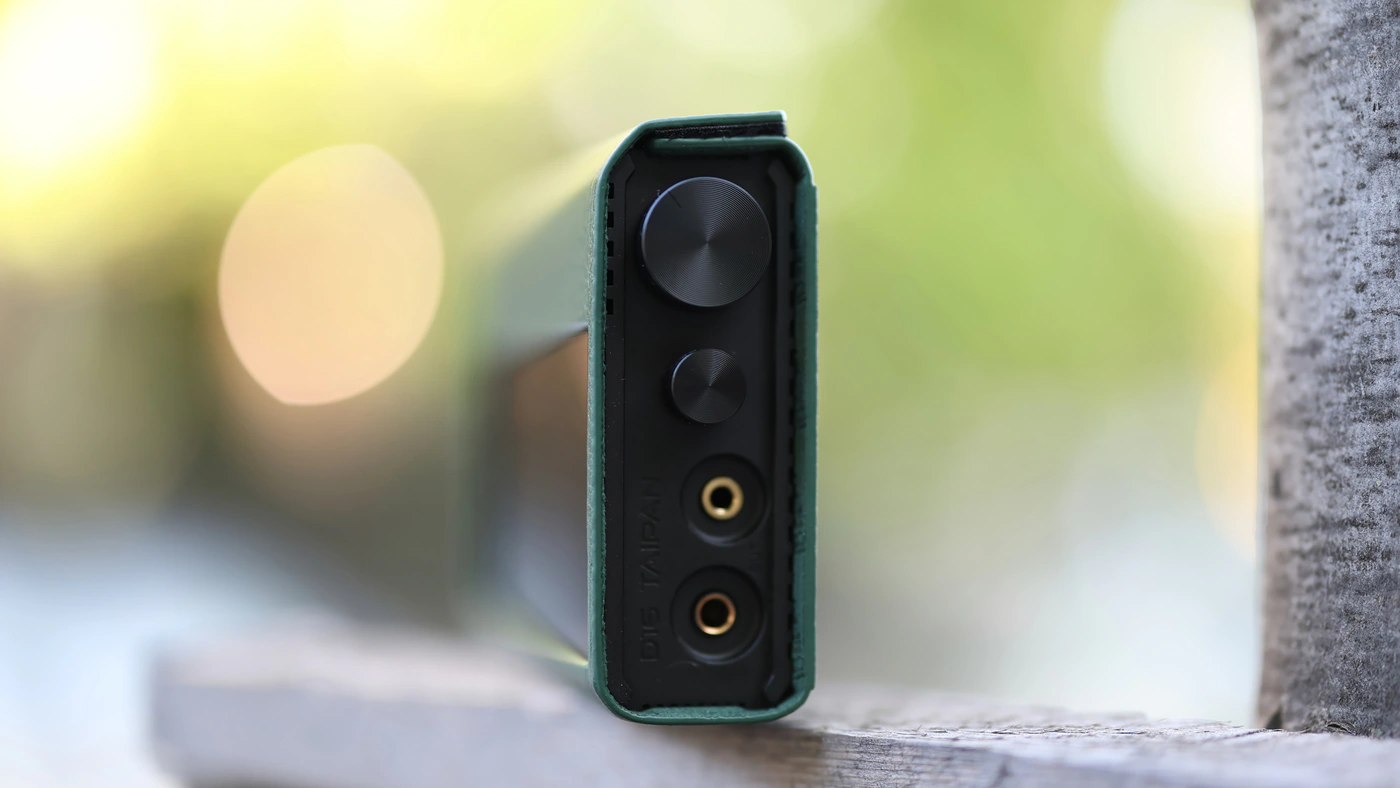
Midrange – The most beautiful part of music is right in the middle, where most of the actual information is, and D16’s ultra fast response to each impulse shines brightly here, you can actually hear how perfect transparency feels like, each voice has the perfect texture and presence, guitars bear the right amount of timbre and each synth has that square wave presented in sharp brilliance and clarity. It is hard to put in words, but D16 reveals something special, something that no other DAC/AMP I heard to date can reveal, and it is boundlessly rich, but precise, the texture is what you actually hear in reality from each instrument, rather than the extra buzzy / fuzzy tube amps typically deliver. D16 just has an impulse response that can define those micro details so perfectly well that I could call it the fastest supercar DAC/AMP of the audiophile world. When reviewing, I usually try to check if something is musical, but when a device is as transparent and controlled as iBasso D16 Taipan and when it has such a low distortion across all volumes, it gives me insight that this is the actual musical, music and beyond signature. When the texture is all from the original recording / original instrument, you really can’t have too much micro details, or too much texture, D16 doesn’t have grain at all, it has the actual realistic timbre painted as if the song was played right in front of you, and for an audiophile that’s eventually the dream, hearing acoustic instruments played live every single time you press play.
Treble – To add a perfect contrast to all the other elements in D16’s sound, it has a perfectly transparent treble, fast in response, rich in micro details, and brilliant in presence / extension. You will hear a different cymbal sound with each album, or in some cases each song, especially with bands like Linkin Park, and their older albums, which seem to have a different sampling for the cymbals, or different recording conditions for each track. D16 shows crisp details for instruments that have reflexions in the high-end, including synths, and you’re often left in awe of how much clarity, information you can hear, all without any trace of grain. In fact, D16 is magically smooth, it controls the treble perfectly with the refinement of R2R DACs, but the impact, dynamics and resolution more similar to Delta-Sigma, their implementation of the 1Bit DAC drawing in the advantages of every type of DAC I heard to date. Treble has strong air and extension, and D16 is a source that will reveal information, air and sparkle, shimmer and energy even at 20 kHz, the only limit in the highs will be your hearing, and the ability of the IEMS it is being paired with.
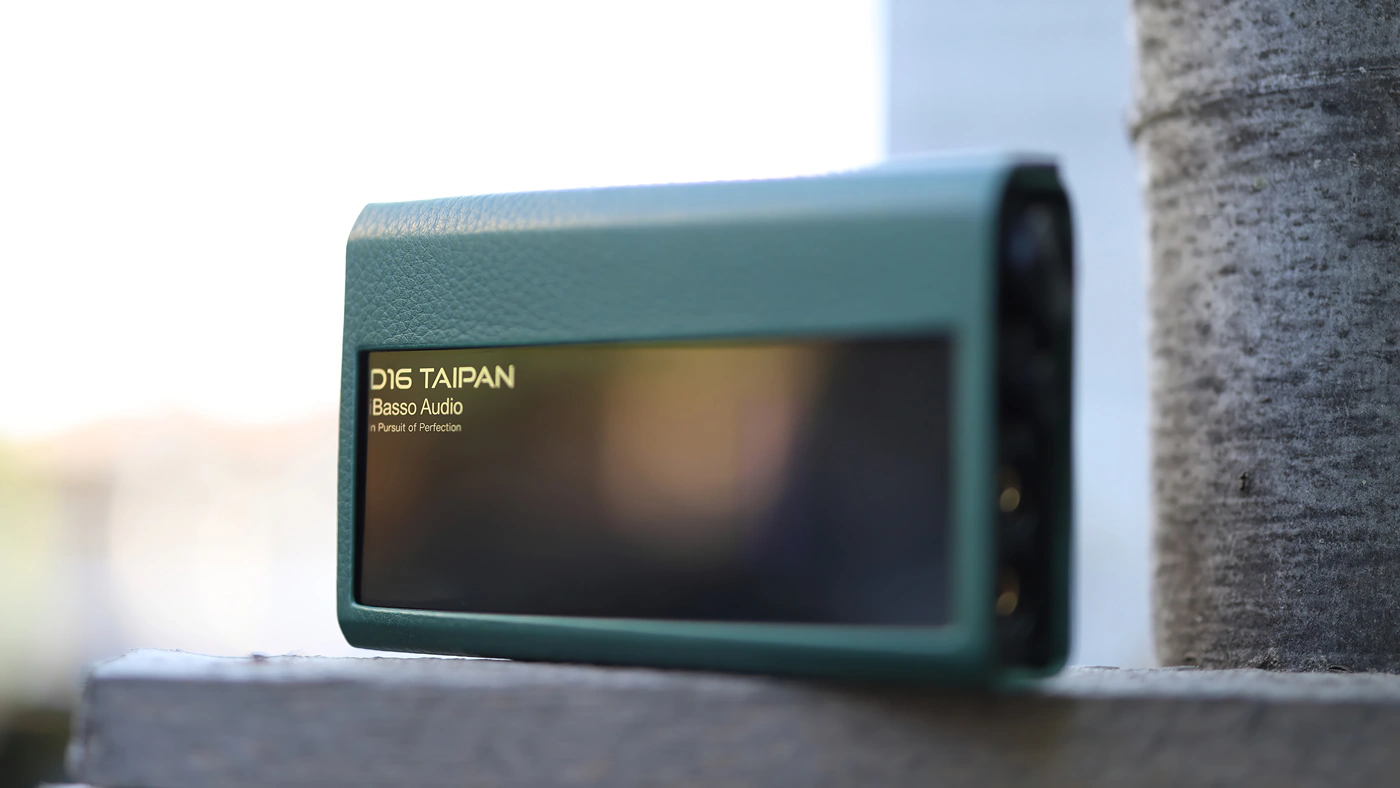
Volume Control – Perfect volume control is the only way I can describe D16, and it has multiple ways of controlling the volume. The analogic volume wheel is stepped, and it offers precise volume steps, having the perfect channel balance this implementation is shown to have with iBasso DX320 MAX Ti, and having zero distortion at the maximum volume step, with full dynamics and impact at the minimum volume too. Although there are multiple gain levels, I honestly left the gain on High for DAC and High for AMP, as it is already plenty and offers me enough control for both headphones and IEMs. At any rate, if you feel like you’d want to be right in between two volume steps, there is a DAC volume you can engage by turning the smaller wheel, which will give you exactly 100 steps of control between each amplifier volume step. I noticed no extra distortion or loss of quality of engaging the DAC volume, but I honestly don’t need to use it, as I get enough control from setting the DAC volume at 100 and using just the stepped analogic volume. Ie900 sits between 10 o’clock and 1 o’clock, while most headphones sit higher, with really hard to drive headphones sitting comfortably at 3 o’clock and above. Even HE1000SE is more than properly driven from the D16, so all of my most used headphones are covered nicely, with all of the IEMs having enough control for my taste, even allowing me quiet listening within the first steps of volume.
Dynamics / PRaT / Textures – iBasso D16 Taipan is the most dynamic sounding DAC / AMP I have heard to date, and it has the most engaging, most vivid sound for a portable DAC/AMP in my experience so far, being at the level of a flagship desktop unit, rather than similar to the standard portable solutions my ears had the honor of hearing. Textures are natural, grainy songs will show their grain, while smoother songs will be smooth, like a properly polished surface, D16 renders everything that comes its way and allows it to pass through without influencing it. If you want more texture, more distortion, and the typical Tube sound, I have great news as I have a review incoming exploring the iBasso PB5 Osprey, which uses NuTubes and has the typical warm and dreamy tube sound with its pleasing extra vibrance. D16 is all here to be clear, transparent and to render the perfect texture the recording has inside.
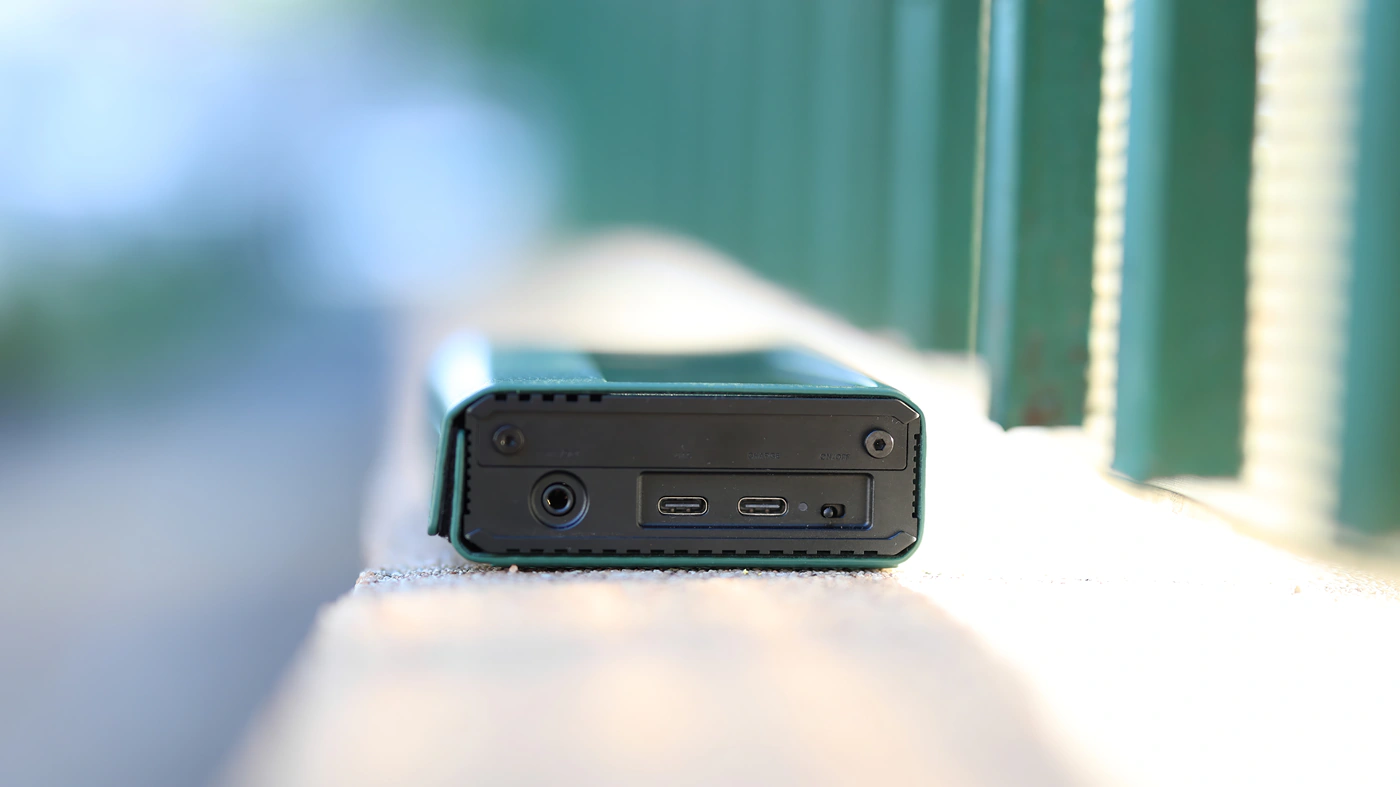
Soundstage – iBasso D16 has both depth and width, it is perfectly capable of creating a vivid, holographic stage, but refined and rounded. This means you can expect most IEMs to become wider, most headphones to project sound outside the confines of your head, and of the room, but at the same time, with zero scattering. D16 excels at instrument separation, definition and clarity, so music stays well defined and crisp. Extension is strong both lateral and in depth, D16 paints a good image, offering strong imaging. You can easily pinpoint where each sound is coming from, what it is, and whether it is a sound that’s close to you or far from you. D16 is also great at staying honest to the source material, so wide songs will be projected in a holographic fashion, while songs with an intimate soundstage will stay personal and intimate. As D16 is a strong all-rounder, it works well with all my music collection, with no favorites, excellent for rock, metal, classical, pop, EDM and everything in between.
Gaming Usage
You never know how much you need a high-end DAC for gaming until you really use one and understand gaming as a concept of art rather than a past time you do out of stress. Indeed, I make games and for me games are an expression of art, with the soundtrack being one of the central elements we have to paint a story, to give the correct vibe to a scene, and to set the mood. D16 has a wide, holographic, 3D soundstage, which works really well for atmospheric games, for soundtracks, and with the detailed, beautiful midrange it paints, it can quickly put you right in the story.
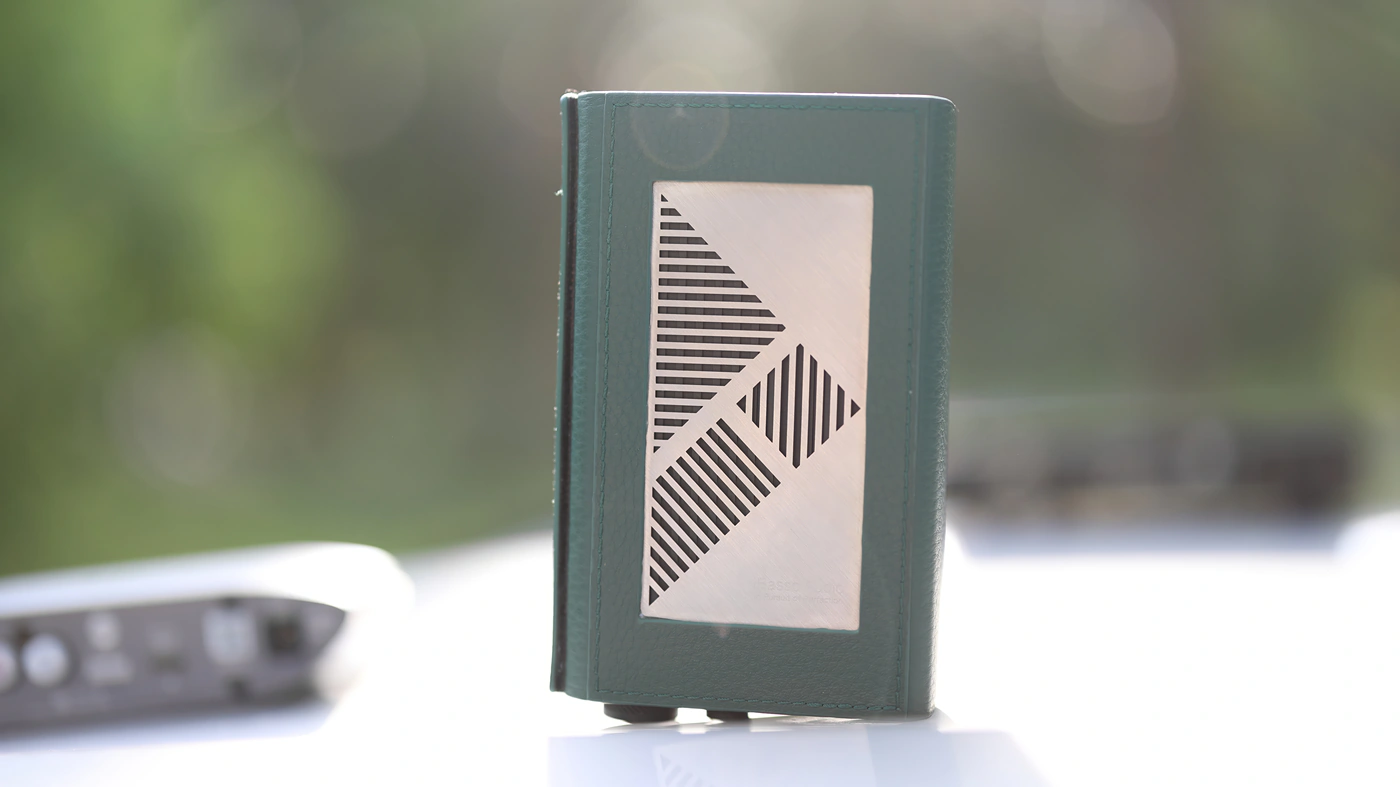
Even for fast-paced action games, shooters, you will hear exactly where each sound is coming from, you will hear your enemies before you see them, you will be one step ahead of the opposition with a good sound. You can also enjoy quick timing for strategy games, and you will get a clean and crisp separation between sounds, which helps a lot when a lot of quick time events are all going off at the same time, and you want to better understand what’s happening. You can call me a happy camper with D16 as the DAC AMP for my gaming setup, regardless of the game type.
Comparisons
iBasso D16 Taipan vs Astell&Kern A&Ultima SP2000T (1499 USD vs 2500 USD)
Build – D16 is a DAC AMP, while A&Ultima SP2000T is a DAP, but both can be used as desktop DACs for computers. There’s a good difference in function, and for extra 1000 USD, SP2000T adds streaming and playing music from an SD card, but a smartphone much quicker and better for streaming can cost lower than 300 USD, and have a larger display, plus longer battery life, although SP2000T sounds quite a bit better than entry-level or even mid range smartphones. I strongly believe that even My samsung S23 Ultra is worse as a transport than a DAP, but you can purchase a high quality DAP like iBasso DX180 for less than 1000 USD, and the functionality is slightly better than SP2000T right now, with more apps, quicker CPU, and just better overall support. This being said, SP2000T is a single device, much smaller than a stack that would include D16 Tapian, it is more portable, although battery life is within the same usable range when driving the same IEMs or the same headphones at the same volume with both.
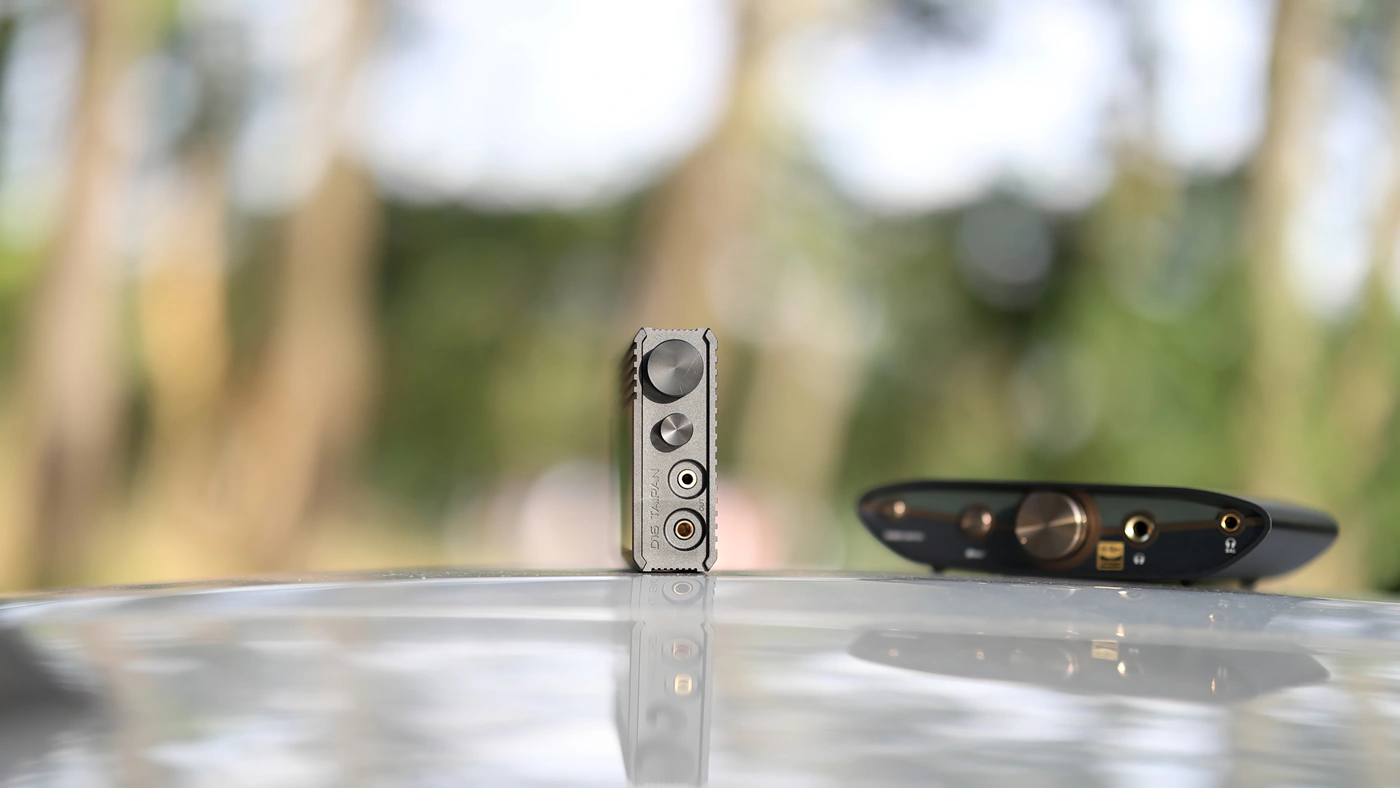
Sound – So if you could add a transport to D16 and have a rather thick stack, why would you do it, when SP2000T offers both Solid State, and Tube sound, and is more portable. Well, to start the sonics, the driving power of the D16 is much higher, it has a much lower THD and better control at maximum volume, D16 is stronger for large headphones, and has a much lower noise and THD for IEMs, where SP2000T has faintly more background noise, both due to output impedance, and due to tube noise associated with the NuTubes. The sound, when volume matched, at a medium volume, driving about the same headphones which are easier to drive, like HIFIMAN Ananda Nano, or Audeze MM-500, or IEMs like Sennheiser Ie900, SP2000T sounds warmer, smoother and has a shallower bass. This being said, D16 sounds more dynamic, deeper in the bass, airier in the treble, has better resolution, better detail and resolution, and a much lower distortion. D16 draws in more advantage on the DAC side, it is far more revealing and superior in how it handles dynamics and textures, which rely heavily on the DAC, but D16 has a more traditional AMP, and if you want Tube Sweetness, you’ll have to wait my review exploring the PB5, and what I suggest to use as the DAC for it, because SP2000T has that pleasing tube distortion you can dial in progressively, while D16 is strictly a solid state DAC AMP. Overall, D16 is much better sonically, at the cost of needing a transport, but I have used it with my S23 Ultra just fine, and liked it better thanks to its much higher driving power and lower distortion. SP2000T is a dream DAP for when I want some of that tube magic, but overall, I like it a bit more for its solid state sound, and D16 can outdo that thanks to the improved DAC.
iBasso D16 Taipan vs Audio Analogue AAdac (1499 USD vs 4000 USD)
Build – AAdac is a full desktop DAC with the weight of a tank, build of a spaceship, and sound of a dream, but when it comes to driving headphones, both D16 and AAdac are basically DAC and headphone AMPs that will do exactly the same thing. You can actually use D16 as a desktop DAC, and use the 4.4mm balanced headphone output, wire it to 2 x XLR outputs for a desktop amplifier, and then it can provide most of the services that AAdac can provide. The only advantage AAdac would have in this situation is the higher number of inputs, and the eye candy element, but AAdac uses a very traditional Sabre ES9038, the raw technical performance being tied to the maximum resolution and clarity of the ES9038. To be fair, AAdac actually doesn’t go for the most technical sound either, so it is not capped by the DAC inside considering the tuning it goes for.
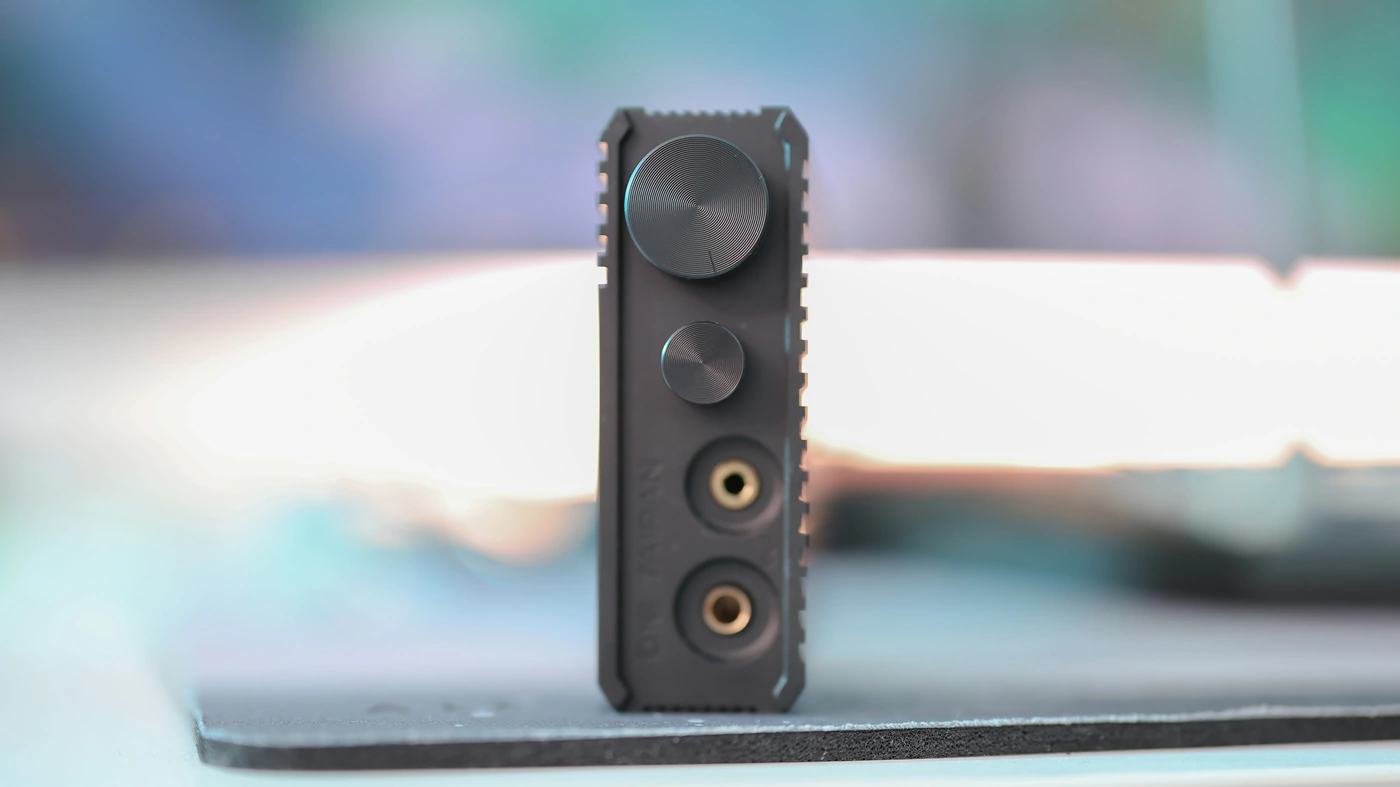
Sound – What matters most at the end of the day is how each sounds like, since we are judging those for the pleasure of our ears, and AAdac has just one 6.3mm headphone output, which has a surprisingly low background noise and a low noise floor, a high driving power, and a warm, pleasing, and engaging, dynamic sound. D16 has a more dynamic, cleaner and punchier sound, with a richer midrange, airier and brighter treble, more shimmer, ever so slightly softer impact, and better bass extension, especially for the 4.4mm balanced headphone output. On the other hand, AAdac, when used as a DAC has a zero-noise floor, which is really neat for desktop systems, especially if you are using an active amplifier that has no volume control, but D16 doesn’t really have any kind of noise either, if using it as a DAC, from the 4.4mm balanced headphone output, so background noise is basically a tie. Sonically, if used as a DAC, D16 shows more resolution, higher detail and better clarity, less warmth, a more precise and more brilliant treble, and a more dynamic, punchier sound. D16 and the way its DAC sounds like is more dynamic, richer and more refined, and it touches both the sub bass and the upper treble much better, while AAdac has a much warmer midrange, with extra thickness, lushness and sounds more analog-like thanks to those, reminding me a lot of high-end tape players, while D16 wins in transparency, soundstage depth and width. AAdac is more convenient for a desktop setup, since you’d have to charge D16 all the time, but you can use both for the same setup with no problems.
iBasso D16 Taipan vs iBasso DX320 MAX Ti (1499 USD vs 3499 USD)
Build – I received the question of whether you should add a D16 to DX320 MAX Ti a lot of times, and this is something I asked myself too, but in the end, if you already have DX320 MAX Ti, I would not recommend D16 to upgrade it, not because the sonics wouldn’t be improved, but because the stack would not be very practical. You can easily use a much more affordable transport, such as ibasso DX260, and still get the same sound, since DX320 MAX Ti and DX260 would sound the same as transports, and enjoy DX320 MAX Ti as a music player with streaming, android and strong OS support, but get a more practical setup to use if you want a stack. This is also a big thing for PB5, because as we will explore in our review exploring PB5, that one can actually be added to DX320 MAX Ti, as it changes the tuning a lot, while D16 has an improvement effect on the clarity, resolution and textures, without transforming the sound into something entirely different. The USB DAC function of D16 works a bit better with lower delay, so purely as a DAC for a PC, it is easier to recommend.
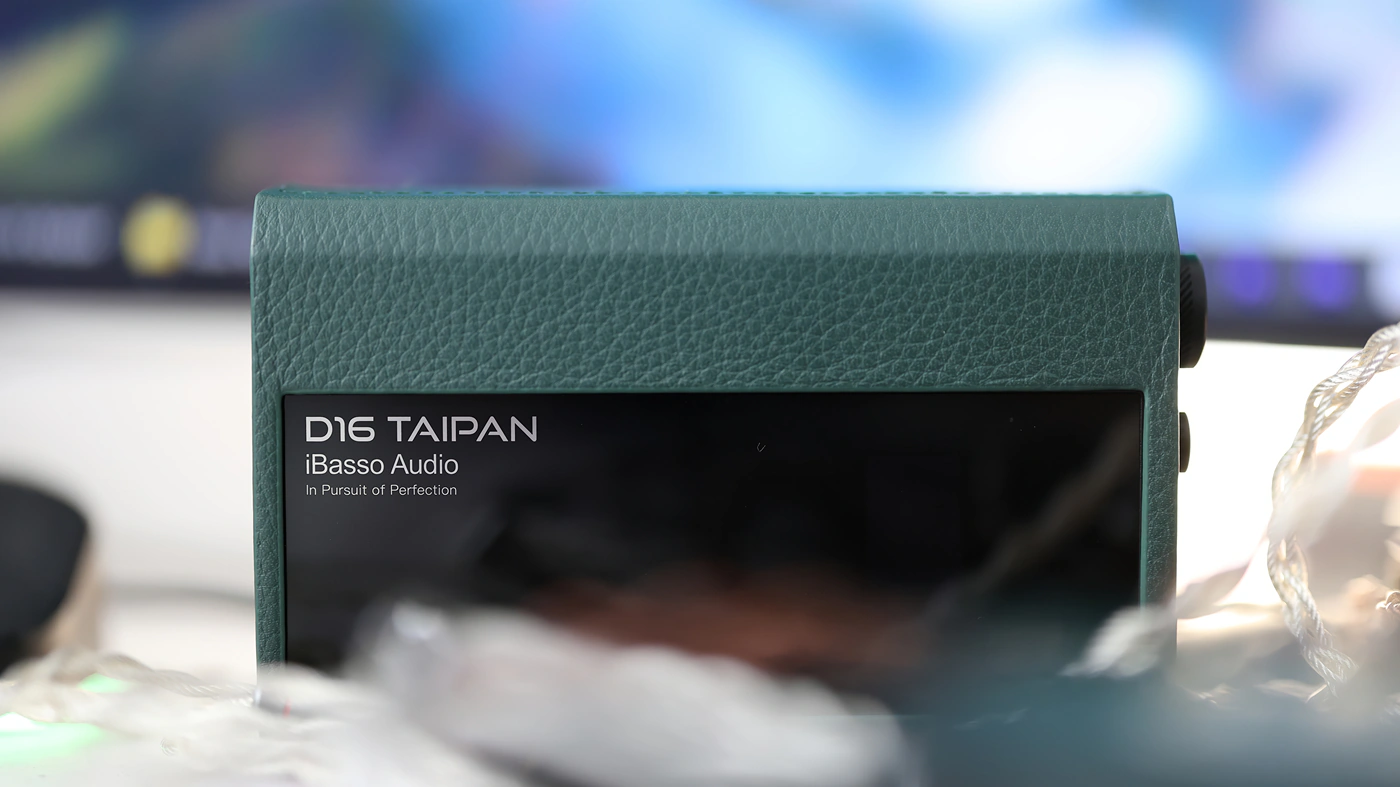
Sound – Indeed, when adding D16 to DX320 MAX Ti, the sound is largely presented in the same fashion, with high transparency, quick speed, more refined as presented by D16, with better micro textures and resolution, but with the same overall tuning. DX320 MAX Ti is the most capable DAP I ever heard to date, and it is a tank of a DAP, it would be completely overkill to add a DAC/AMP to it, and turn it into a transport, and you can more easily spend less than 1000 USD for DX260 to use as a transport, and keep DX320 MAX Ti as it is, or add PB5 to DX320 MAX ti if you want a tube sound with the thicker, warmer and more textured sound a tube brings to the table. DX320 MAX Ti still is as excellent as it was the 1st day I heard it, and D16 refines on it, brings in a more defined sound, but the textures being more refined, can also sound a bit smoother and softer, DX320 MAX Ti sounds a bit harder, which for a lot of music can also be desirable. While this is my first review about a 1Bit DAC, it resembles a middle ground between the R2R sound and the traditional Delta-Sigma DAC sound, with D16 having a bit of both. DX320 MAX Ti has a different way of offering a granular control, but in the end both have zero quality loss at low volumes, both have zero distortion at high volumes. Both sound best from their balanced outputs. D16 is more convenient as a DAC, while DX320 Max Ti is more convenient as a standalone flagship DAP.
iBasso D16 Taipan vs Dethonray Listening M1 (1499 USD vs 2599 USD)
Build – Still on the desktop side of things, Listening M1 is quickly becoming one of my most read reviews for the written review, so a lot of people asked if D16 would make a better purchase. From a construction standpoint, M1 needs a power outlet at all times, it is also fairly small, but can use two USB inputs, a Coaxial input, and wireless input. This being said, M1 has RCA line outs, and balanced headphone outputs, while D16 can have both the single ended and the balanced headphone outputs act as line outs, so more balanced line outs. Both have zero USB DAC delay, I can’t hear any kind of background noise from either with the vast majority of IEMS, but Listening M1 seems to mute the sound entirely when nothing is playing, so it outputs not just zero noise, but zero sound. The company managed to keep the delay to a zero. The maximum driving power is a bit higher on the Listening M1, in practice, at max volume possible with no distortion, but it has slightly less granular control for IEMs, where D16 excels a lot over all the DAC/AMPs I heard so far. You can use a complex power supply for Listening M1 to bring it closer to the battery filtered situation D16 has, but Listening M1 is already pricier, and adding more to the price won’t make it more affordable.
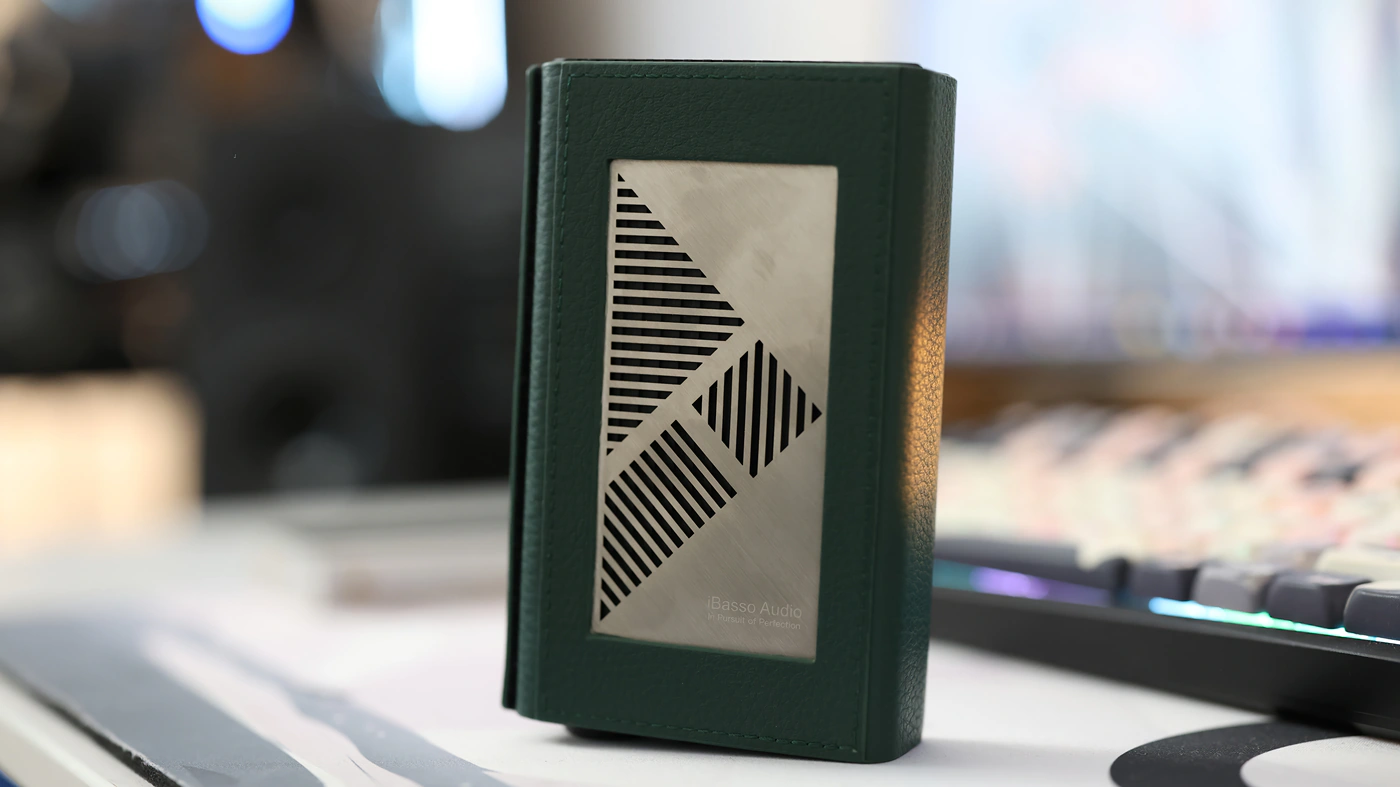
Sound – Now that we know that constructionally they are not far from each other, I can start with the sound, where M1 is really far from D16, and D16 from M1, as they go for heavily different tunings and sounds. We have a really full, smooth and pleasing sound coming from Dethonray Listening M1, which is basically the deepest, smoothest and heaviest sounding DAC AMP, having such a powerful, lush and deep bass that it colors everything in its own flavor. In contrast, D16 has a much more neutral tuning, with better resolution, better dynamics, slightly softer impact in the textures, more refined textures, and a slightly more rounded soundstage, with better instrument separation, creating a more transparent, and higher res listening experience, but not the colorful kind that M1 offers. The decision here should be taken based on which one you prefer subjectively. I know I got headphones to match with each, and music to match with each, but for you as a reader, consider your own taste. If you enjoy bass in heavy quantities, and if you want the most lush, deepest and warmest sound available, Listening M1 is easily the one you should purchase, while if you prefer a technically powerful DAC AMP, transparency, precision, a refined neutrality, and exceptional instrument separation, with the highest resolution possible, iBasso D16 is your bet. What you drive will also matter, D16 handles IEMS better, has a more granular volume control, D16 has a bit of extra power on the tap at the top end, especially max volume, but both will handle headphones well, and for most people, who don’t want to go deaf, both should have plenty of volume with zero distortion. If you feel you may ever take it outdoors, D16 is straight-up the answer, as M1 needs a power outlet to work.
iBasso D16 Taipan vs Astell&Kern ACRO CA1000T (1499 USD vs 2299 USD)
Build – This is basically the best comparison I can offer, because CA1000T is both a strong DAC AMP and also a DAP, and I also got the question of whether for the extra money, you can simply skip the D16 and get CA1000T, since size wise, it already has a nice little screen, app support, and DAP support, so a transport embedded within a strong DAC AMP. Starting with the build, you should keep in mind that D16 has no transport inside, so the smartphone or PC will be the transport, but the software on CA1000T is somewhat limitative compared to an iBasso DX260 or DX170, as CA1000T only supports a few streaming apps, and playing files from a microSD card, and that is about it. The design / construction will be a matter of taste, but I was able to use DX320 MAX Ti outdoors just fine, months in a row after I got it, while CA1000T only three times really left the house with me, as it is too heavy, too inconvenient to travel with, needs to be pulled out every single time to change the song, and the whole design just does not make any sense for portability, just transportability. D16 is also very portable, even strapped to my smartphone, it is lighter and more manageable than a since CA1000T, so CA1000T can live in a backpack, but then you wouldn’t have volume control, which also would defeat the idea of transporting a high-end DAC AMP with you. There are all 4 headphone outputs on the CA1000T (2.5mm, 3.5mm, 4.4mm and 6.3mm), while D16 has only the important two (3.5mm and 4.4mm). At the back, Ca1000T has a separate charge and data Type-C port, which is excellent, it has a 4.4mm input, which is not really that useful, considering that D16 would be used as a DAC, and a 4.4mm output is more important here, but CA1000T has the extra optical input in the standard optical format, Coax input, RCA outputs, and mini XLR outputs, but you’ll need special cables to use those. The noise floor of CA1000T is basically zero and so is d16’s noise floor, and both have zero ms of delay for the USB dac function. If you’re at the desktop, you can more easily bring in iBasso PB5 alongside D16 for tube coloration, as it has a much stronger effect than using the hybrid or tube mode on CA1000T.
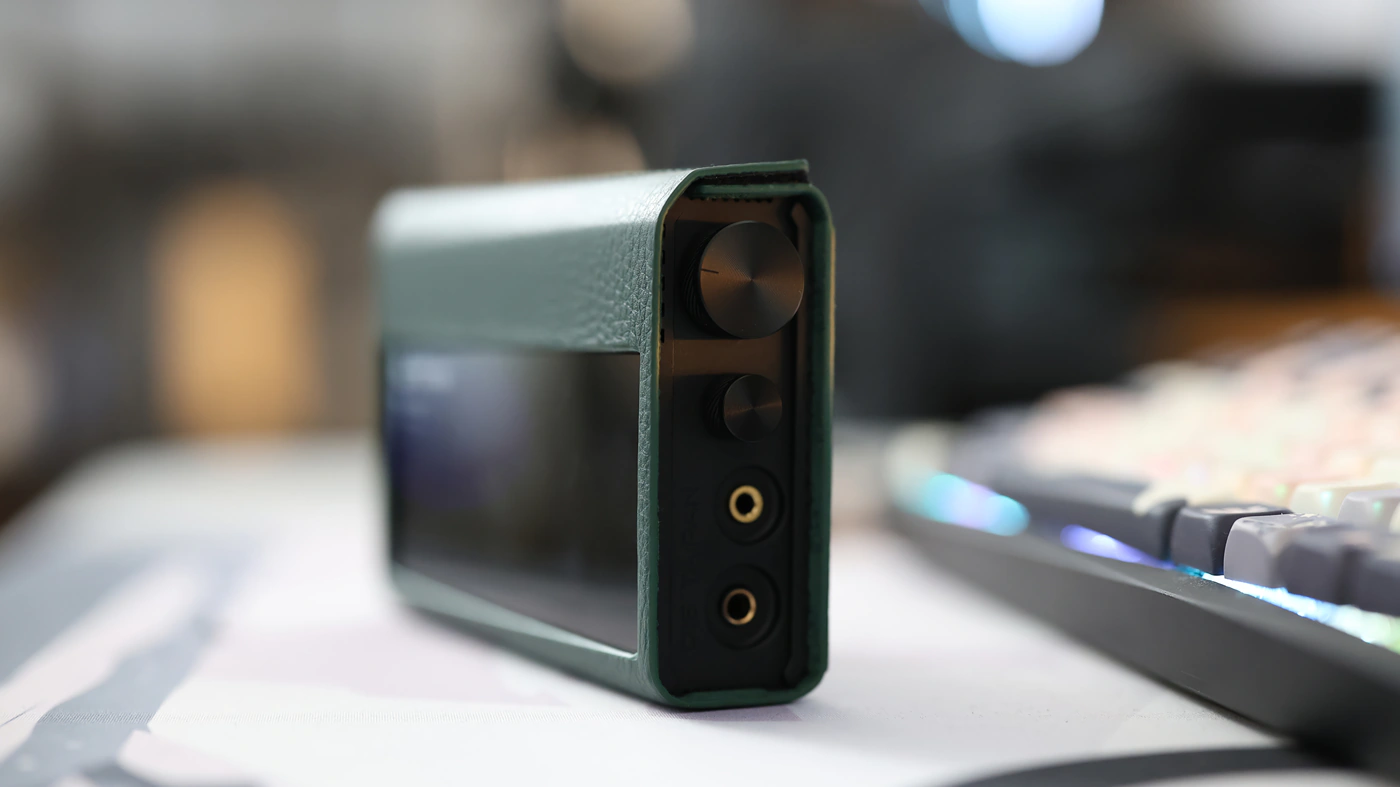
Sound – And the reason I would rather use both d16 and PB5 together is that they have both a lower noise floor, and a more colorful, more powerful sound. CA1000T has really strong driving power, it it can struggle at maximum a bit, especially in tube mode, or in hybrid mode, which means I often use it in Solid state mode, where the sound it has is dead neutral, somewhat dry, and very technical, but quickly shows grain and issues in music, while D16 with its unique DAC solution reveals more detail, has a higher resolution, a wider and deeper soundstage, stronger sub bass, brighter and airier treble, and a more refined, slightly softer texture, being the DAC aMP I never have to turn off due to fatigue, despite being one of the most detailed ones. Dynamics are higher on d16, and this makes it really easy to go for it with rock, metal, and ACG, while for classical, the brighter, more colorful treble adds a bit of extra spice to the mix. CA1000T is super interesting if you need a detailed, neutral DAC AMP that is dry, it would likely be better in a studio if you wanted to know at each exact moment when grain starts to happen, while D16 is more pleasing to the ear for listening to music, and it is more refined, working better for enjoyment and allowing me far more hours of ear time with no fatigue.
Pairings
iBasso D16 Taipan + HIFIMAN He1000SE (1499 USD + 3500 USD) – I had to do this, and everyone likely understands why, as HE1000Se is a staple for me and most listeners, being the hardest to drive common headphone, so the hardest to drive headphone until you reach Susvara and HE6SE. D16 has more than enough power on the tap for them, a strong impact, excellent resolution, and has both control and authority over HE1000SE. I love how D16 improves on the resolution, clarity and soundstage with HE1000SE, without making them hard or fatiguing. In fact, D16 is one of the most refined sources for HE1000SE, and gives them a detailed, crisp sound, while keeping textures and transient response ever so slightly soft, distortion-free and clean. Basically, it can control the HE1000Se in the true sense of the word, creating that colorful midrange, and bright, airy, but refined treble everyone raves about when talking about them.
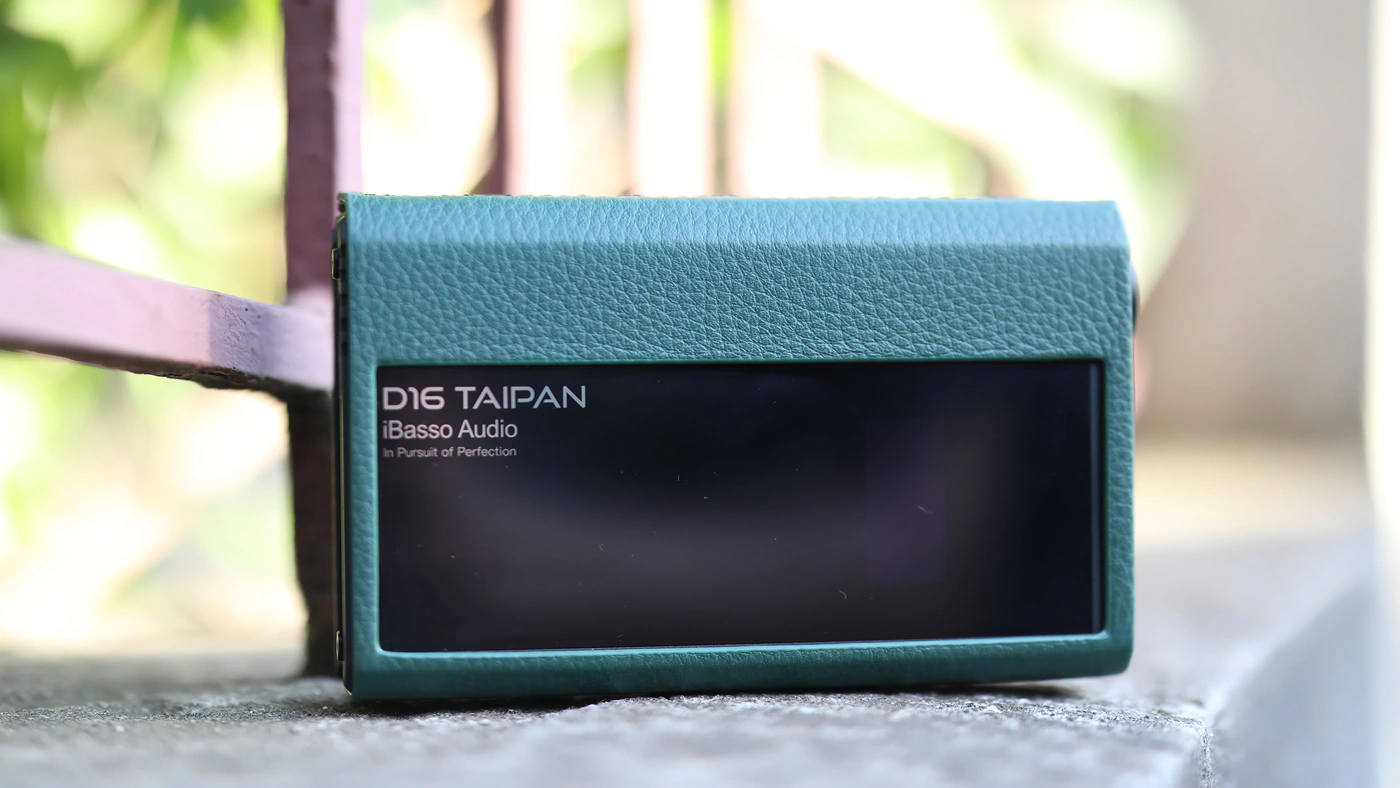
iBasso D16 Taipan + Soundz Avant (1499 USD + 1390 USD) – Avant is not hard to drive, but has the potential to be awesome if paired with the correct source, so D16 is my source of choice often when listening to the Avant, as D16 has refinement, clarity and resolution, but also a wide soundstage, holographic presentation, and no background noise that I can hear with the Avant, this being one of the most sensitive IEMs in my experience. An important note here is that D16 has exceptional, performance from both the single ended and the balanced output,m and Avant originally comes with a single ended cable, but D16 has a superb sound off the SE output too, but using aftermarket cables, and the balanced output on D16, the resolution is improved, and so are the dynamics and tightness of the sound.
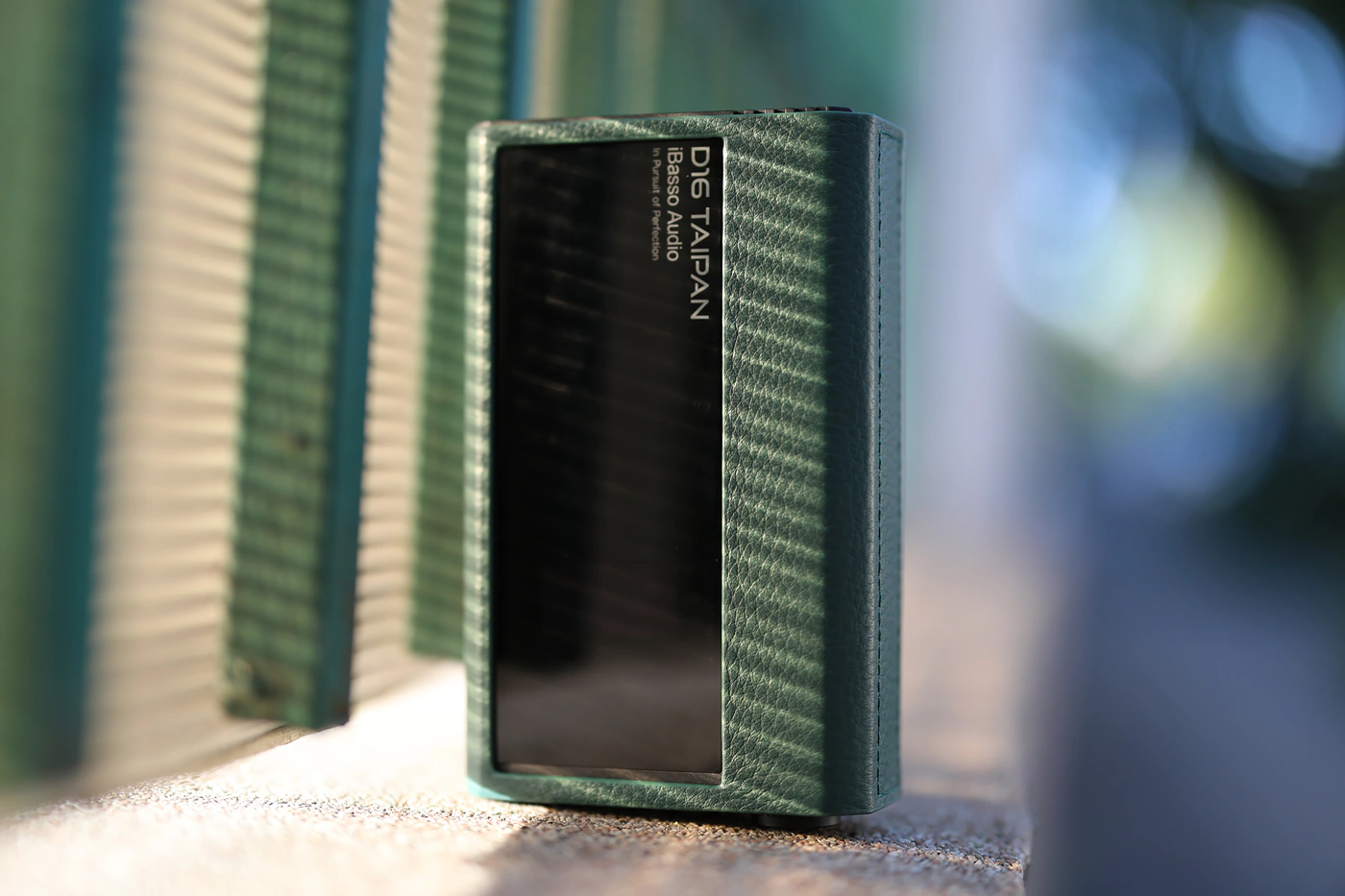
iBasso D16 Taipan + iBasso SR3 (1499 USD + 599 USD) – As it seems folks often want me to recommend the whole setup from a single company, SR3 is a great headphone to pair with D16, as D16 will strengthen the resolution, clarity and revealing ability of SR3, giving them a super wide soundstage, strong dynamics, and a beautiful midrange, musical, full and detailed. If you need a comfortable headphone that also sounds comfortable, has no fatigue, but a full, clean and detailed sound, SR3 is one of the best I can recommend, and pairs really well with D16, for ultimate resolution, comfort and listening pleasure.
Value and Conclusion
It has been a long while since I was able to say with a guilt-free soul that a truly high-end flagship is totally worth every single penny in its price tag. iBasso actually developed new technology here, and implemented it where no one else would, and what’s most interesting is that they priced it reasonably, where most companies would likely have strapped a price 5-10 times higher for a DAC/AMP that sounds so engaging, detailed and controlled as D16.
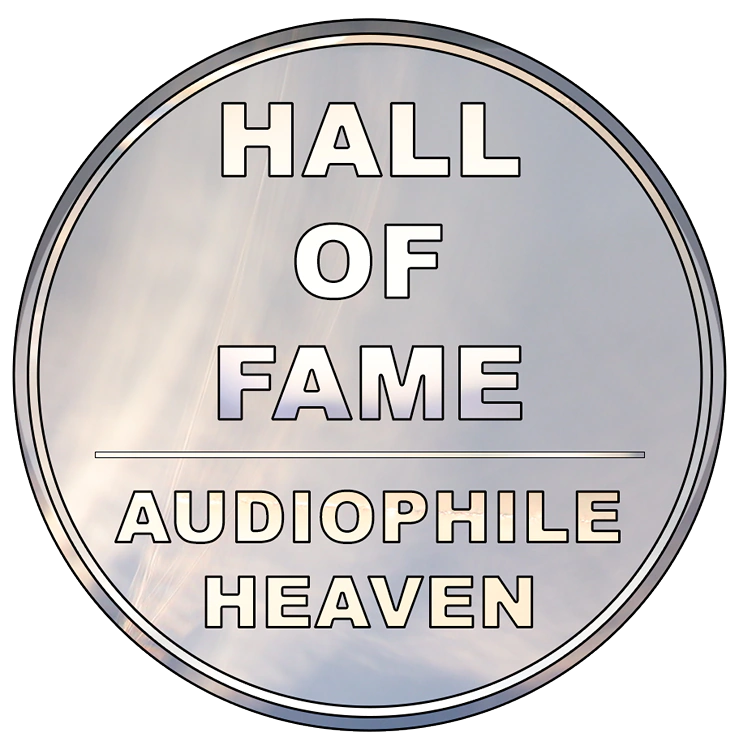
There are so many features hidden under the hood of this ultimate DAC/AMP, including the volume control integration, excellent FPGA and DAC integration, super Class A Power Amplifier, as well as the USB DAC function with zero ms of delay, to the point where I have to add iBasso D16 Taipan to the Audiophile-Heaven Hall Of Fame as one of the most interesting DAC/AMPs you can purchase today, and a unit I am 100% sure will satisfy everyone single person who hears it.
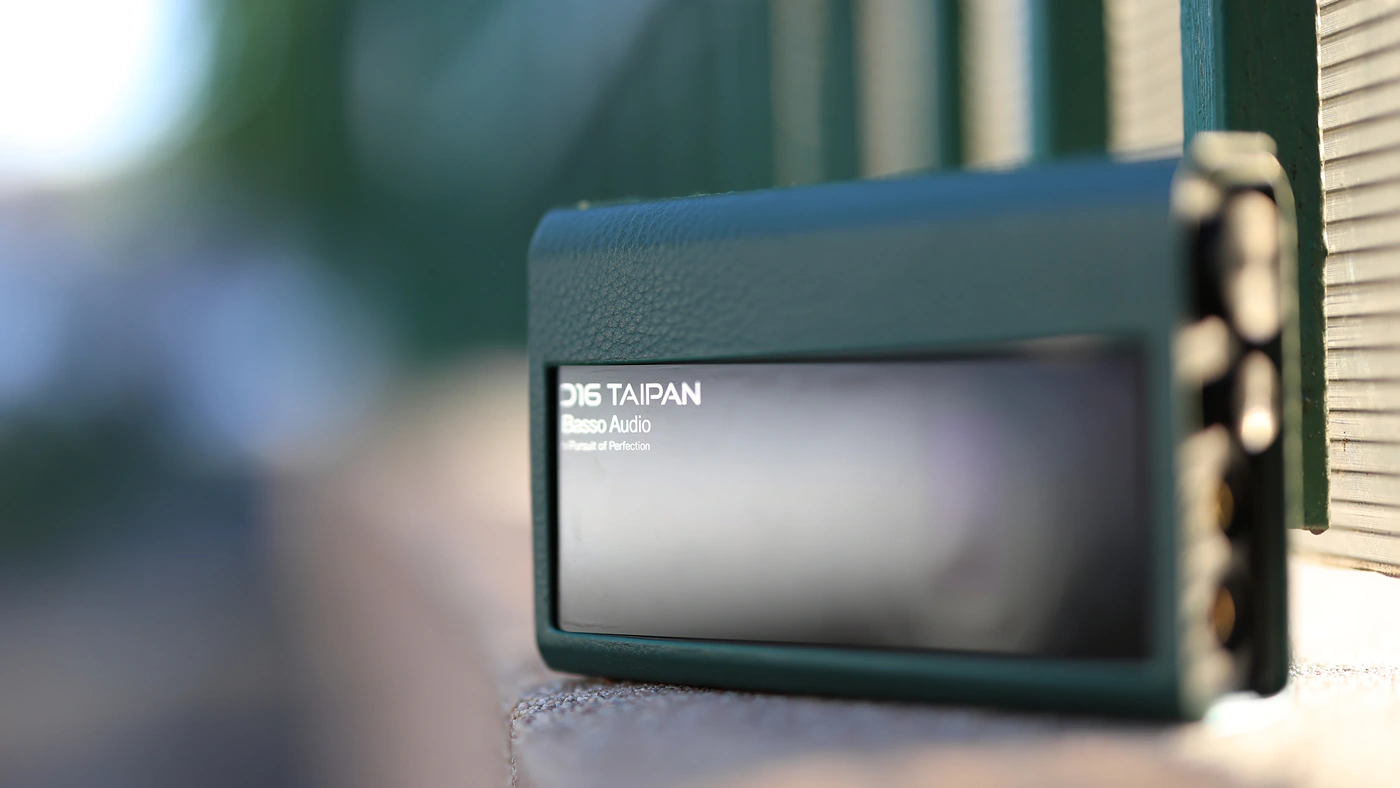
At the end of the day, if you want to have a unique piece of tech that has an even lower distortion and THD, a higher dynamic range, much better resolution and clarity, and ultimate will bring you endlessly more fun than most other DAC/AMPs available today, iBasso D16 Taipan is a fully recommended purchase and so far my favorite DAC/AMP of this year.
Product Link
You can grab one here – https://amzn.to/4fvwP2Y
--- Please remember to stay safe, and always have fun while listening to music!---
- If you have a dime to spare, please donate, and help us! It would make the day brighter for me and my wife-
Full Playlist used for this review
We listened to more songs than those named in this playlist, but those are excellent for identifying a sonic signature. I recommend trying most of the songs from this playlist, especially if you’re searching for new music! The playlists are different for Spotify, Tidal and Youtube, and based on the songs I enjoy and are available on each!
https://www.youtube.com/playlist?list=PL_cjBXGmwSHSdGcwuc_bKbBDGHL4QvYBu
https://open.spotify.com/playlist/5J3oloz8Riy9LxEGenOjQ0?si=979ba4f082414be7
https://tidal.com/browse/playlist/330fd544-8e5b-4839-bd35-676b2edbb3d5
--- Contact Us ---





